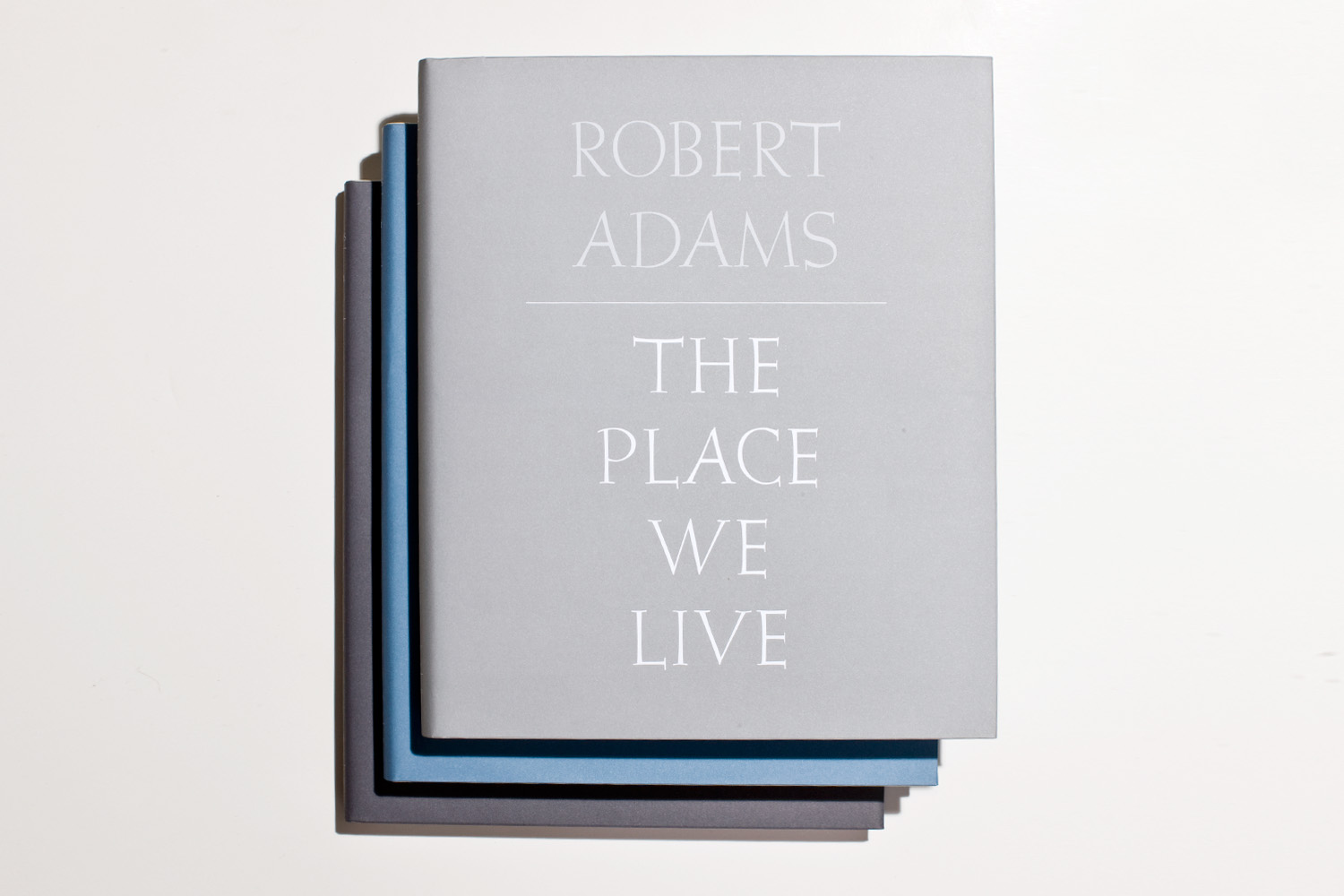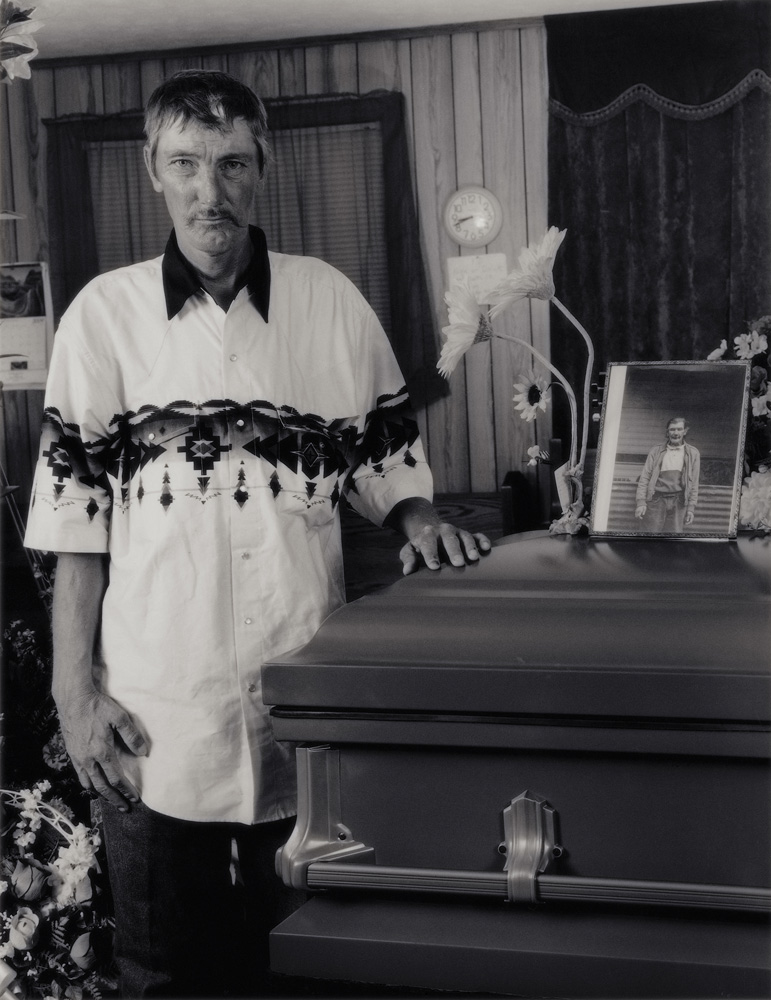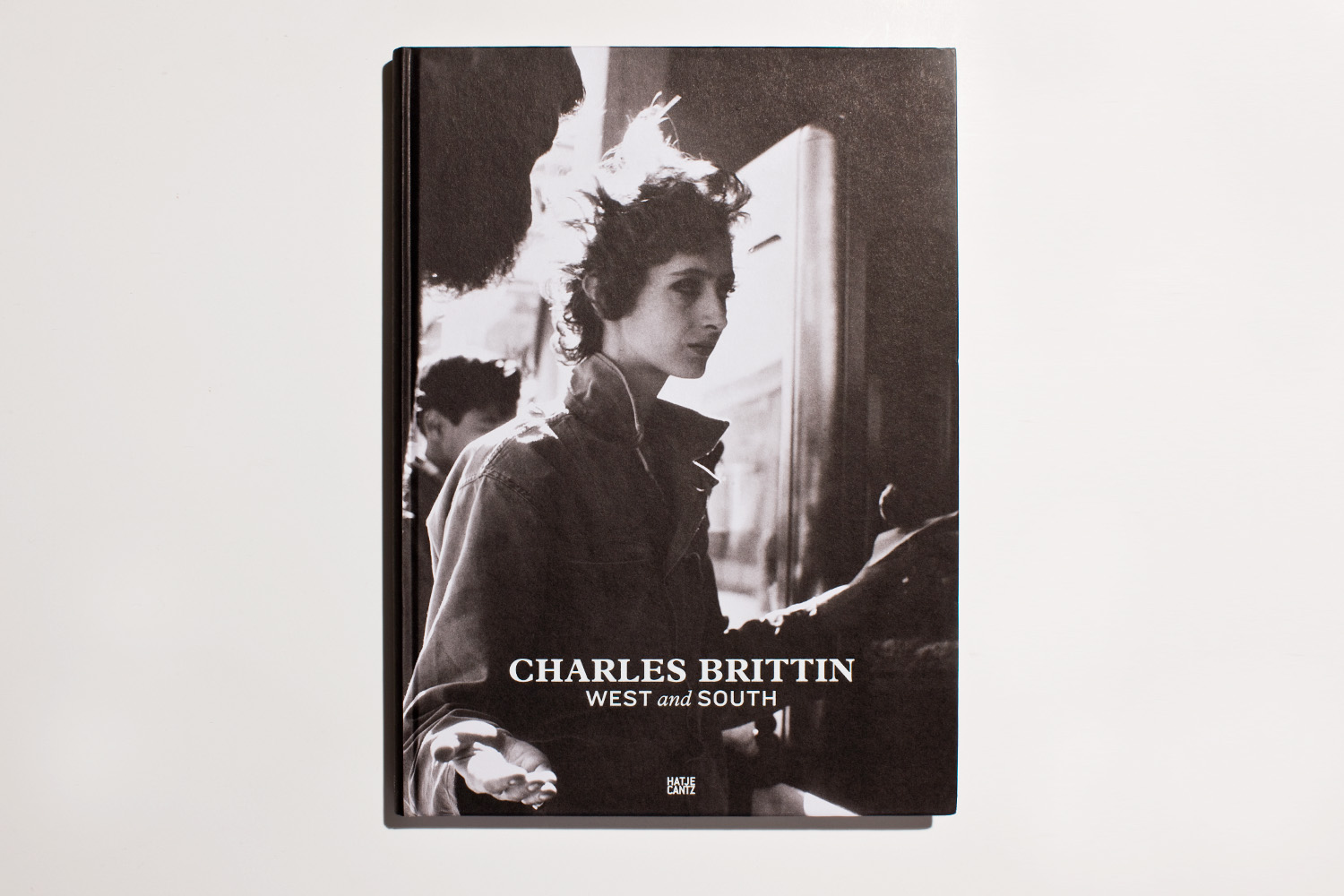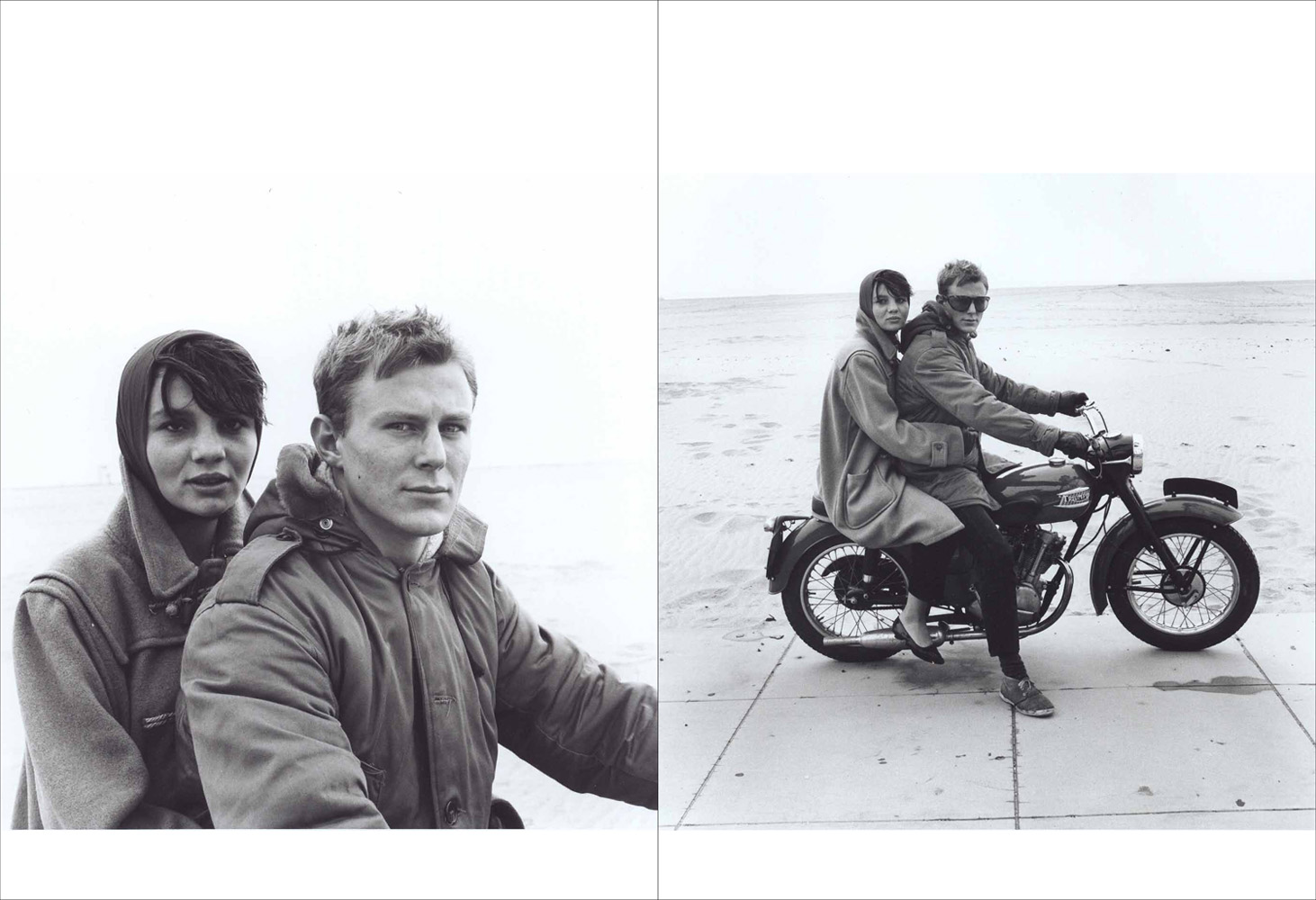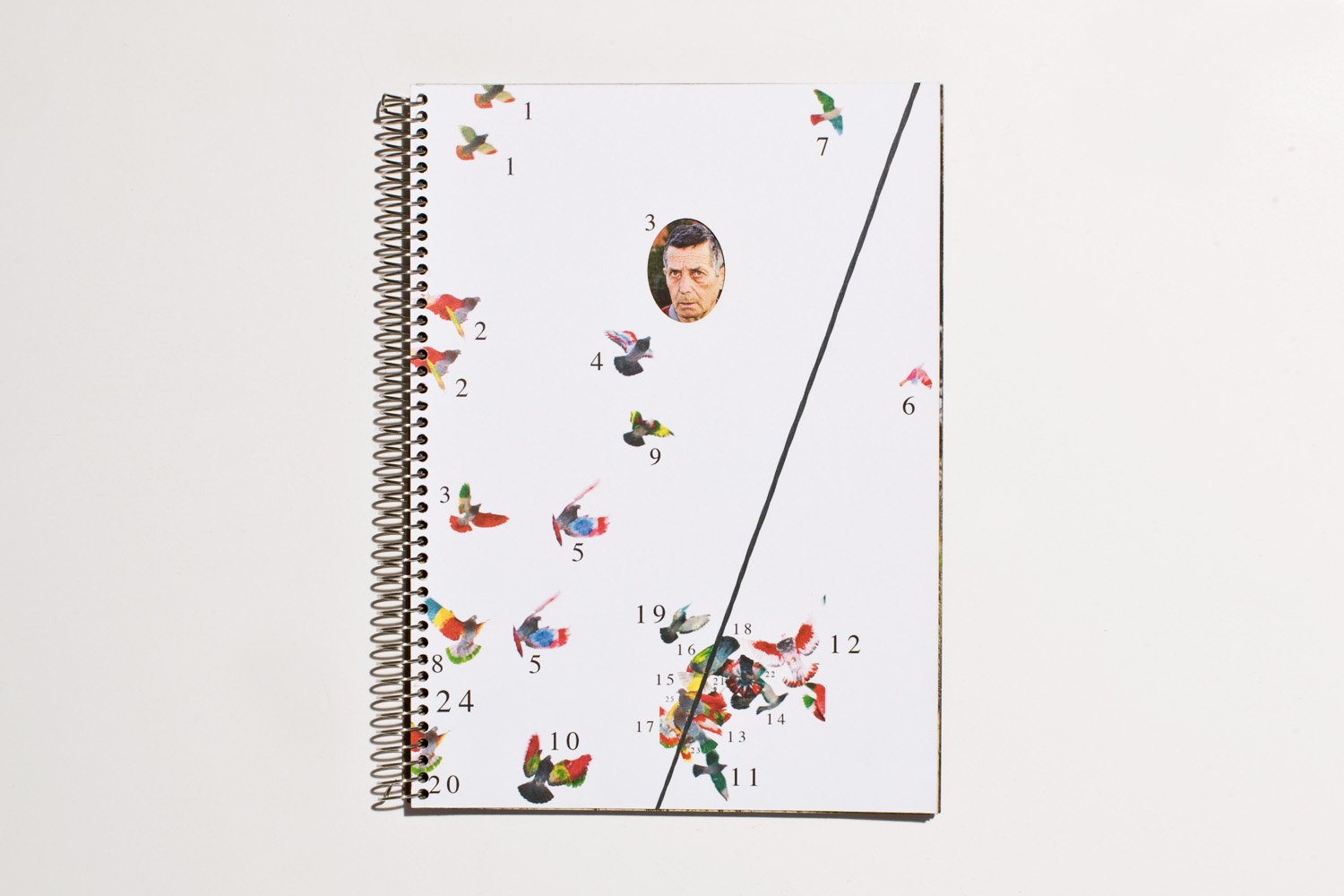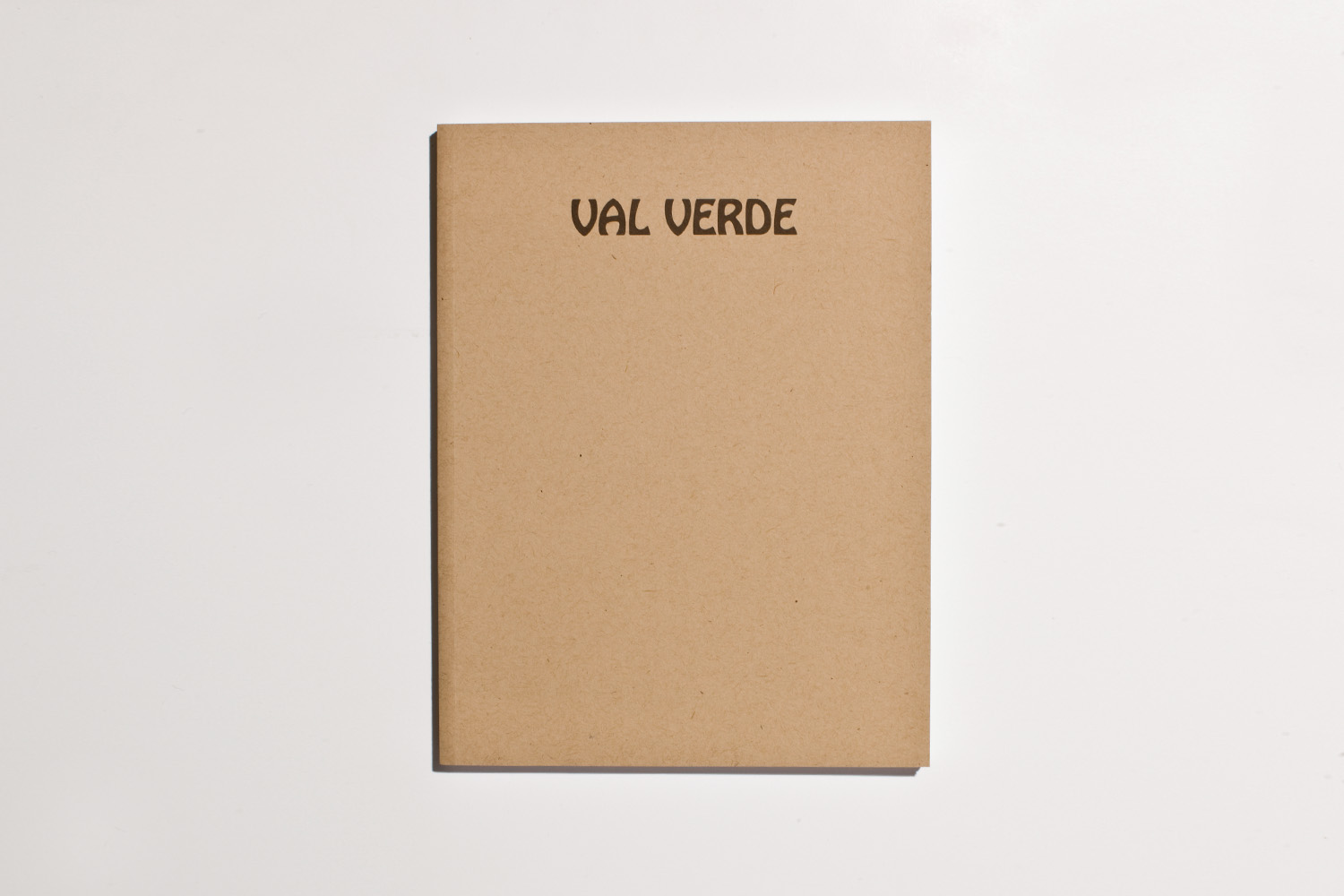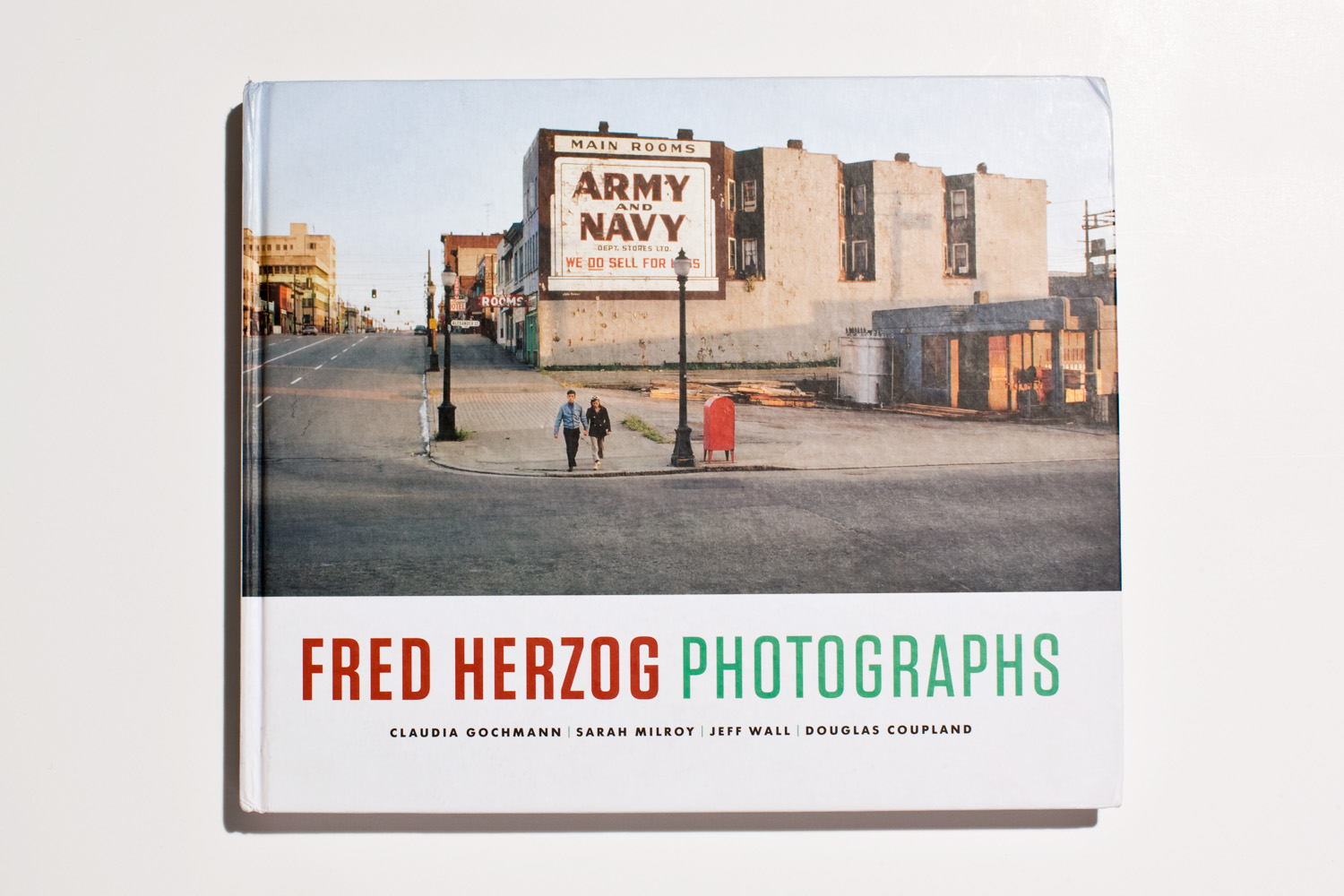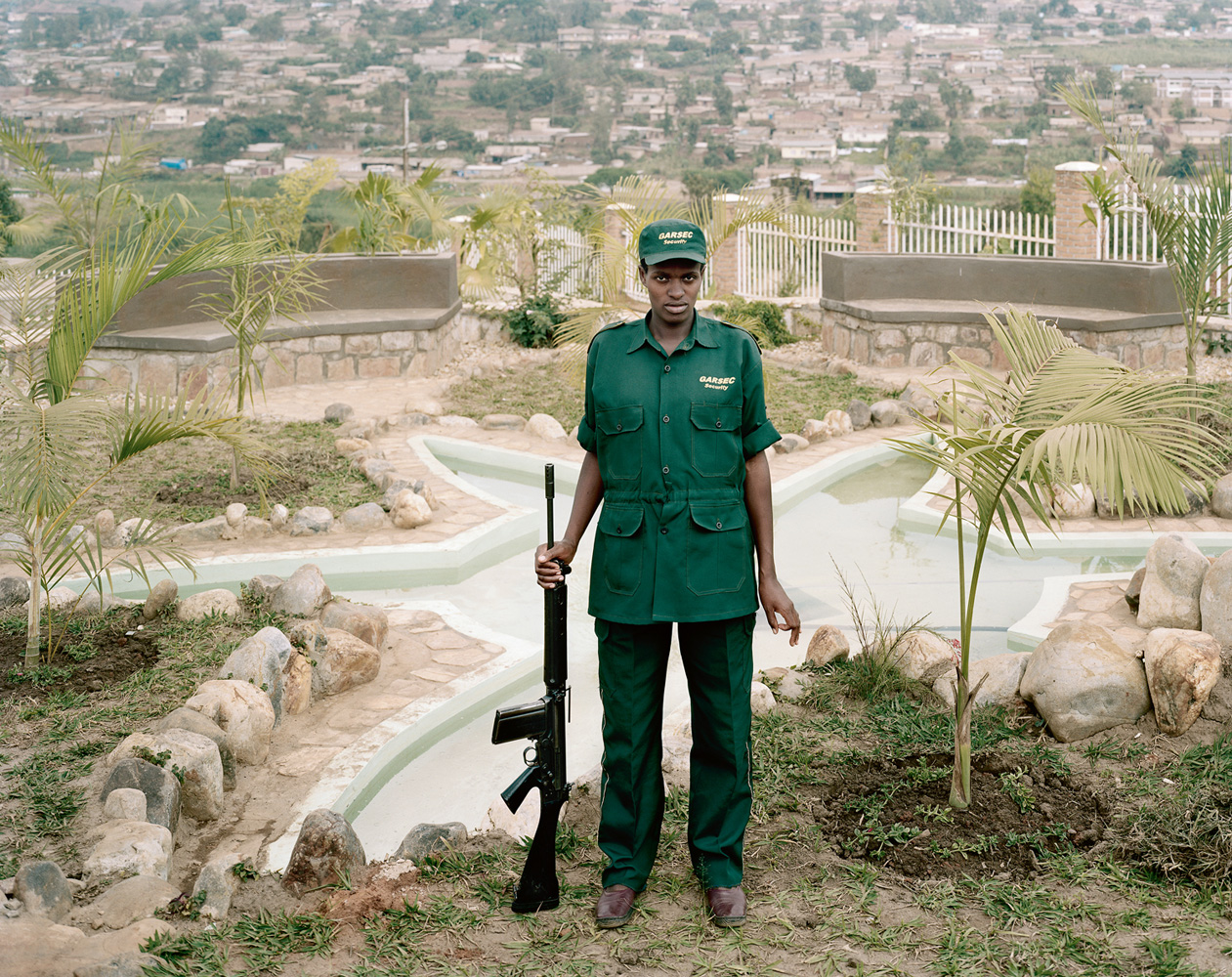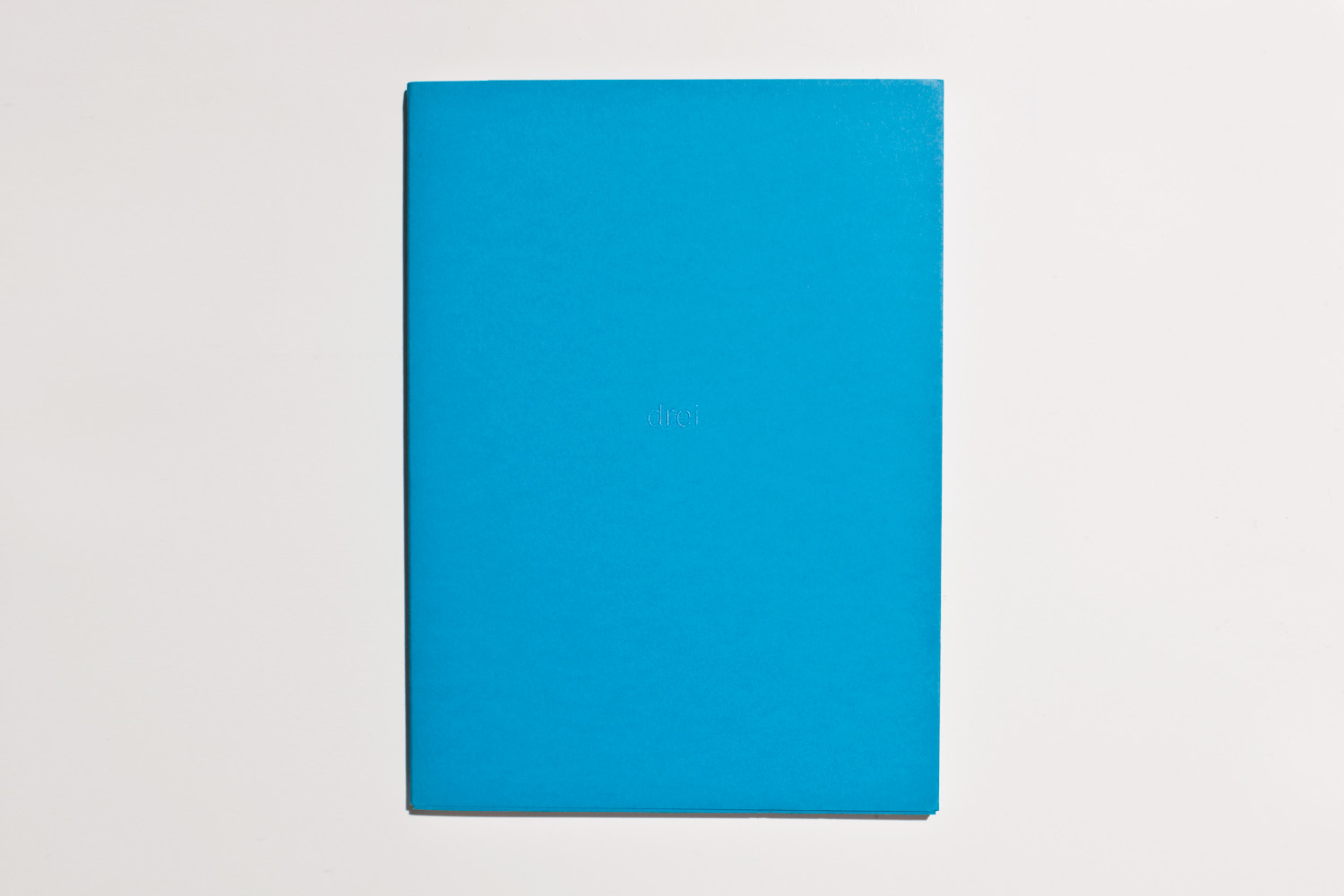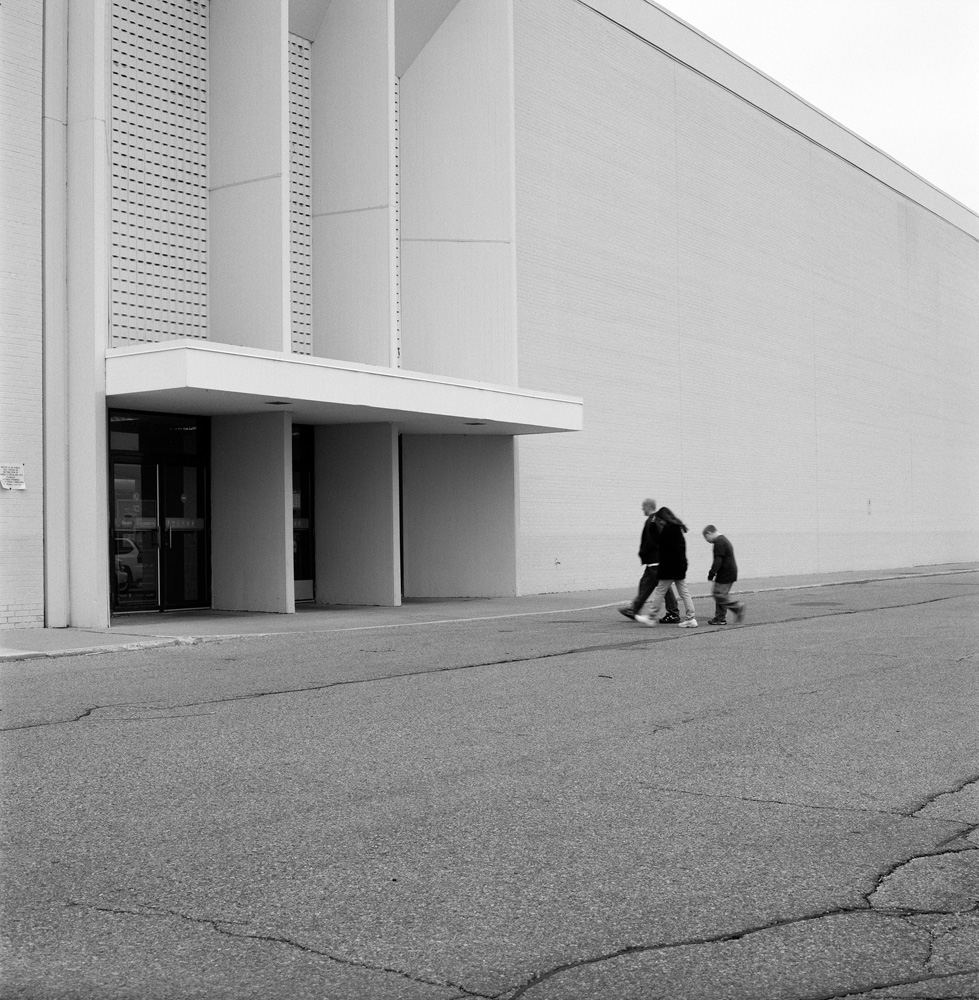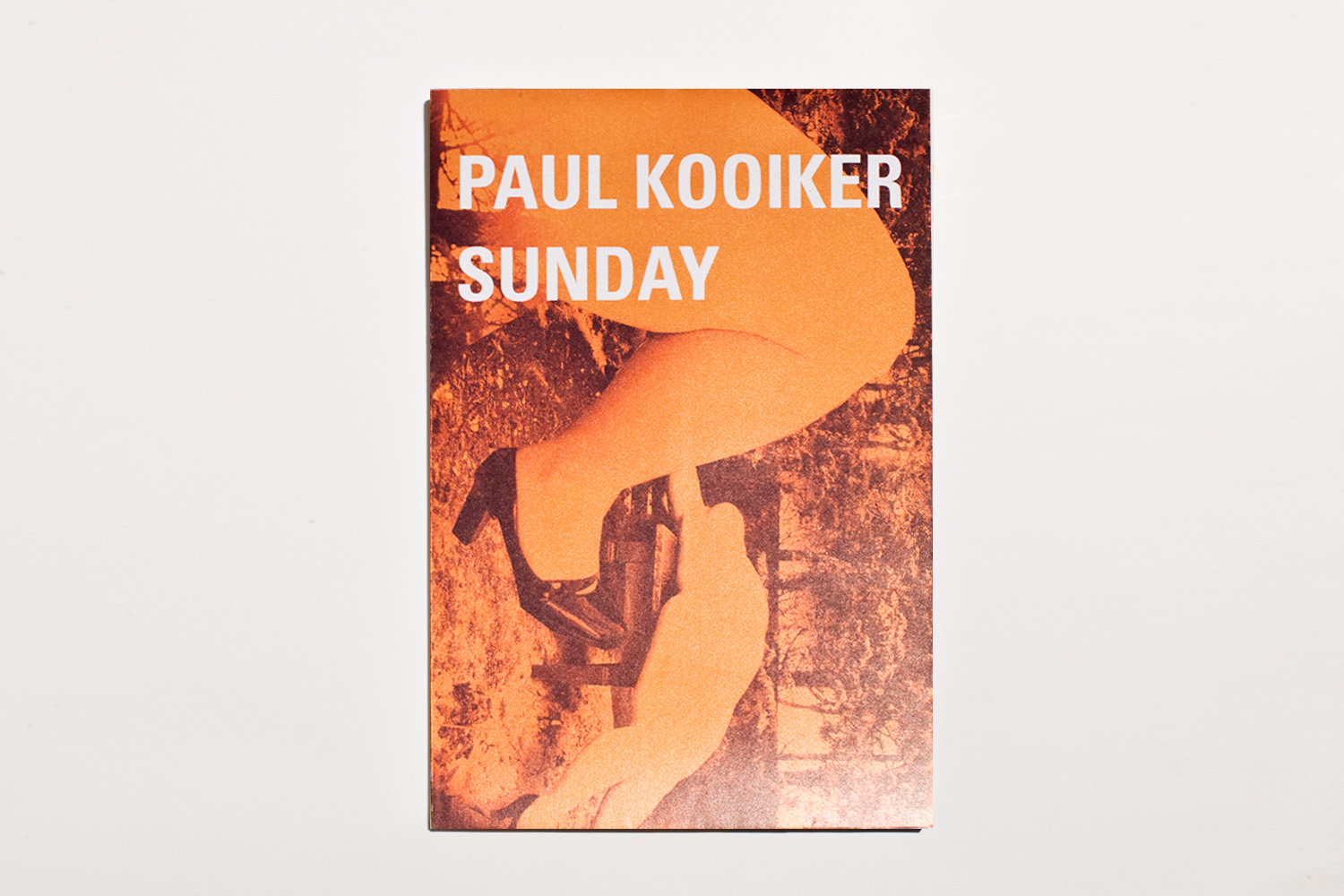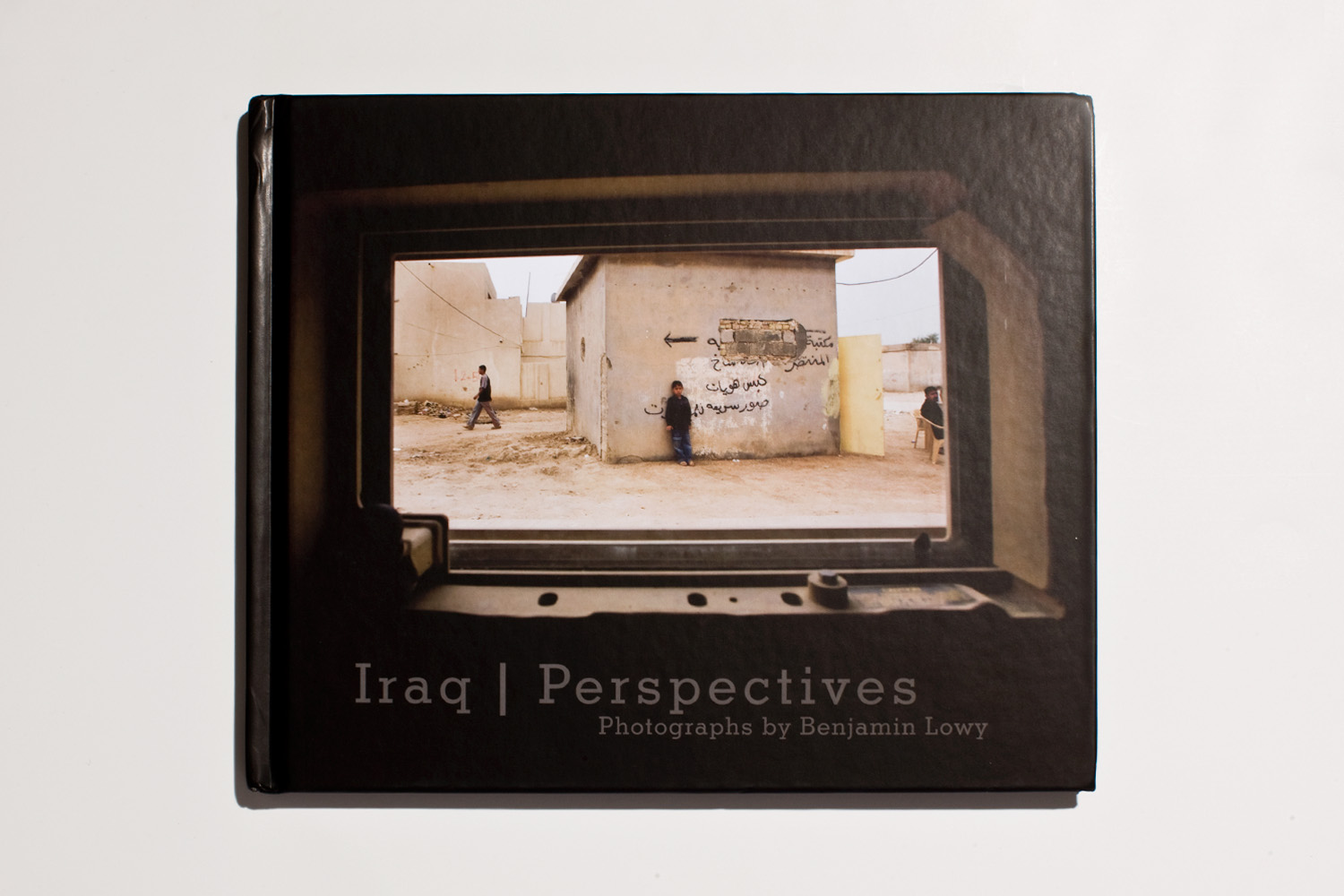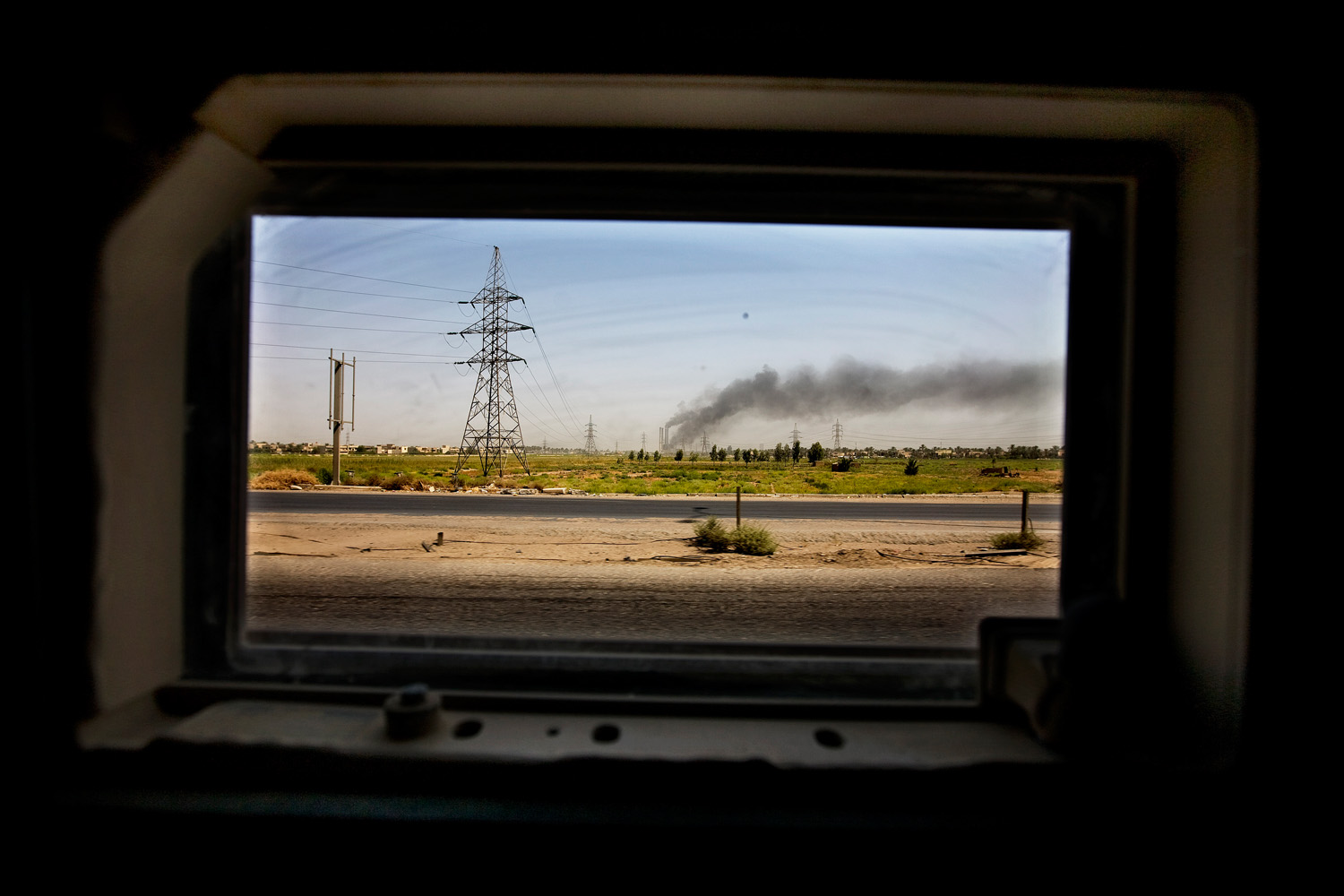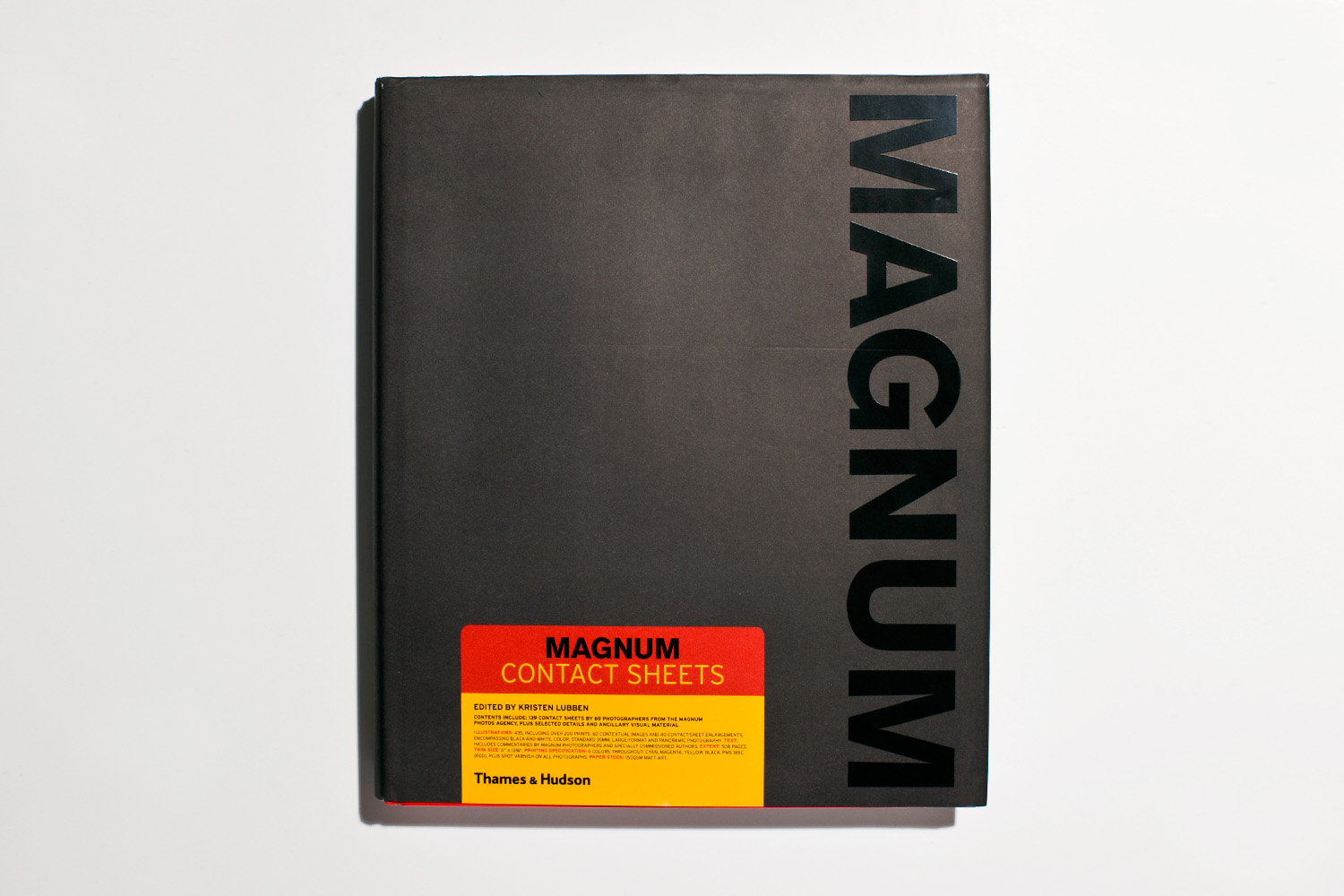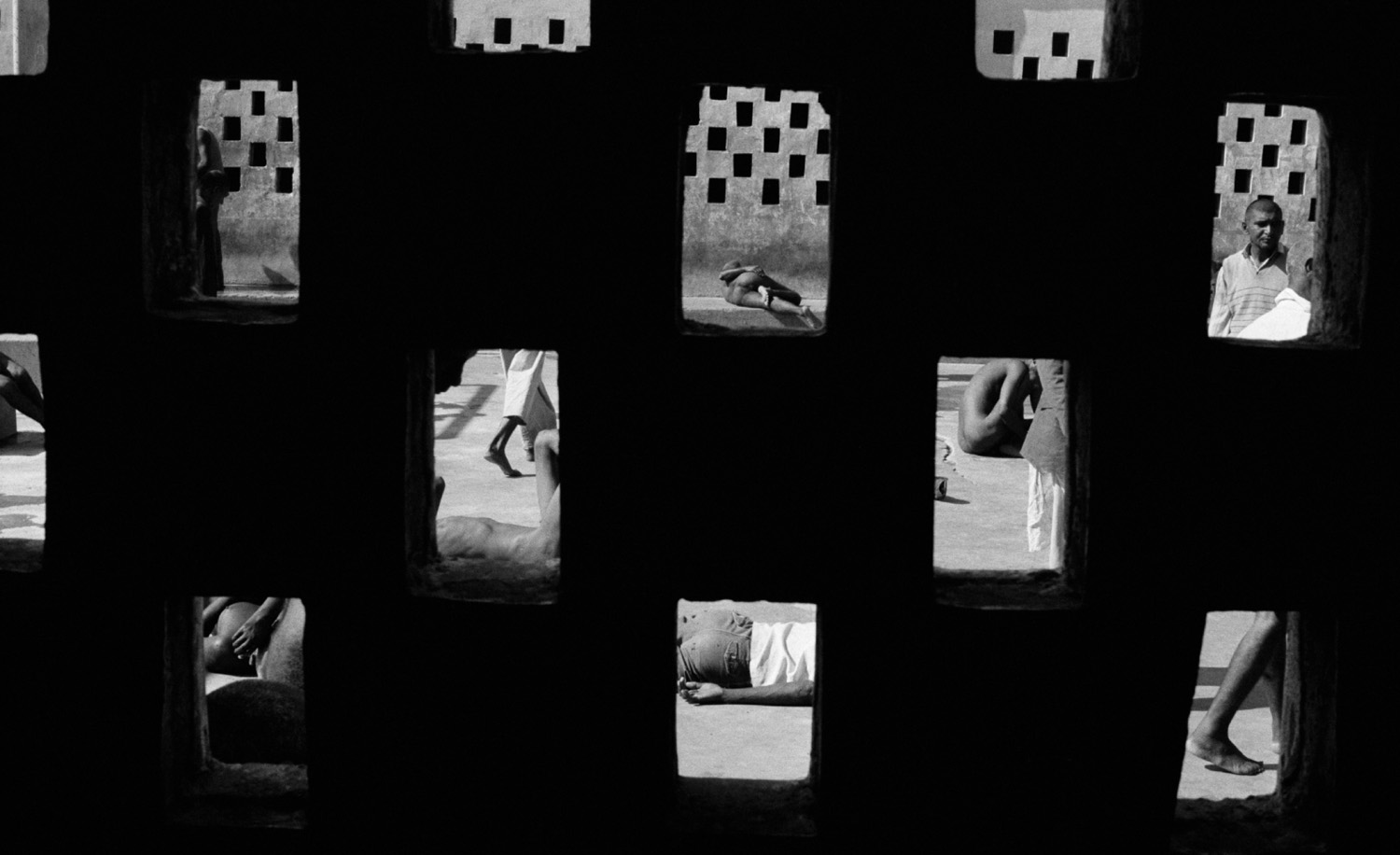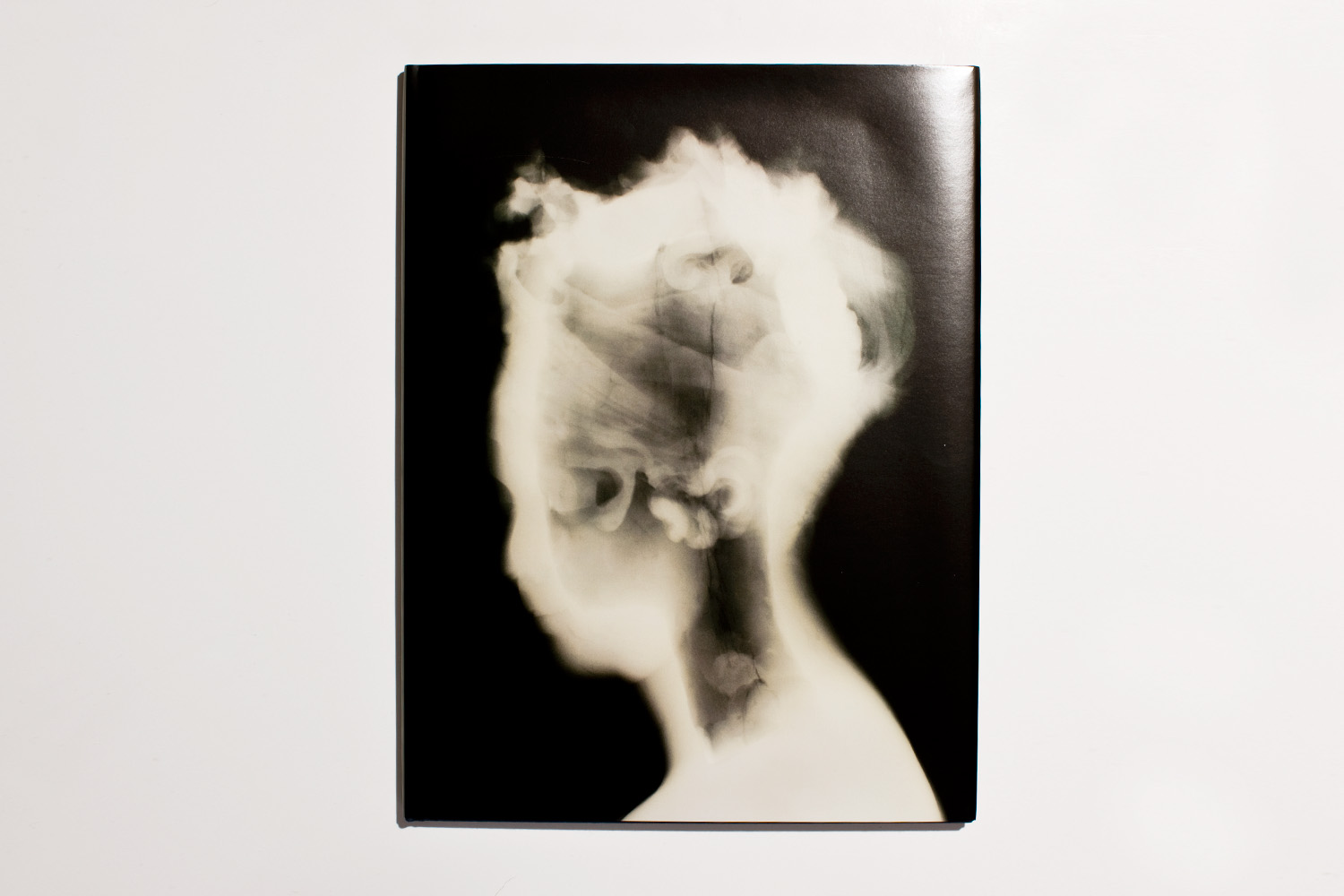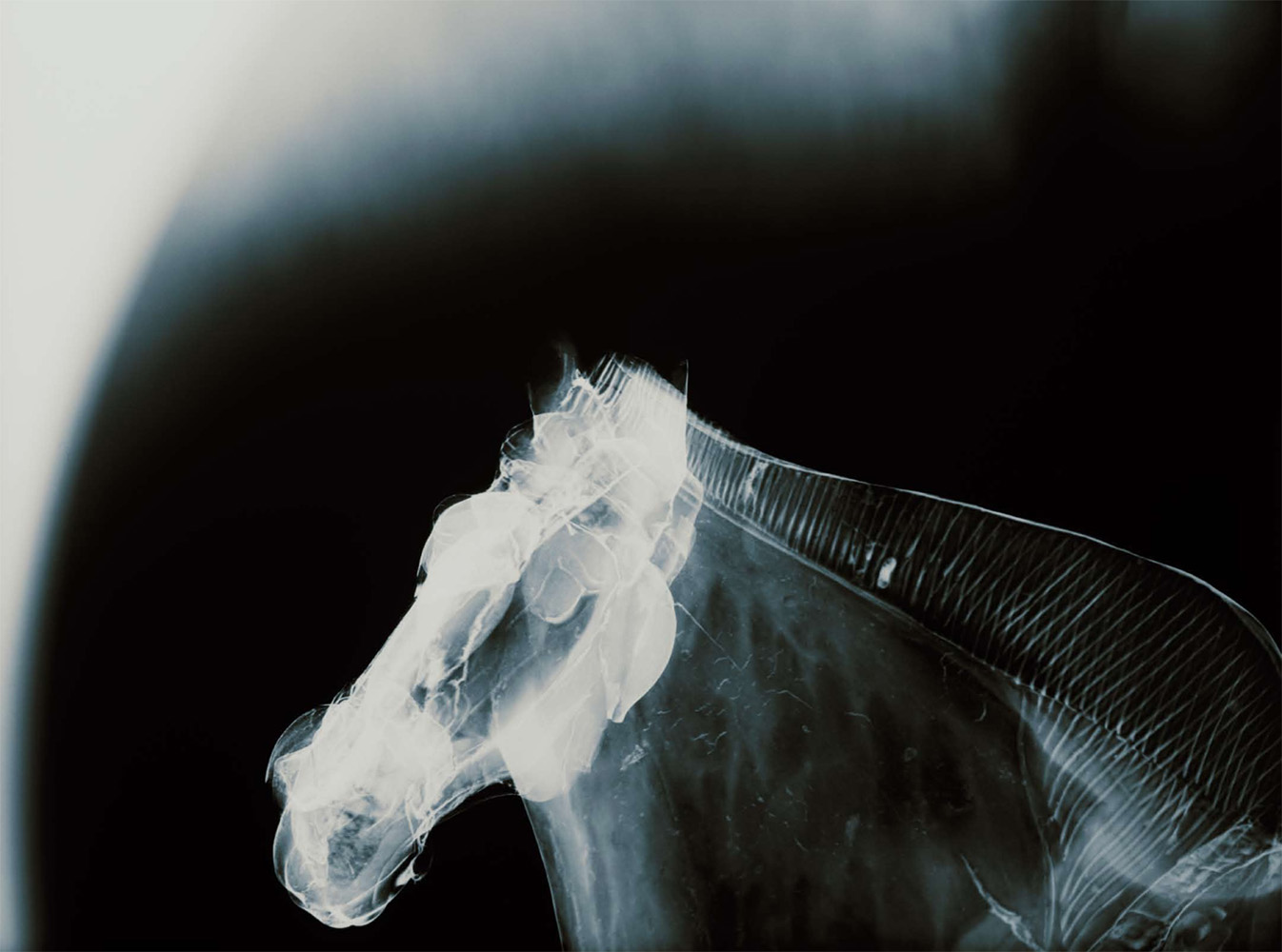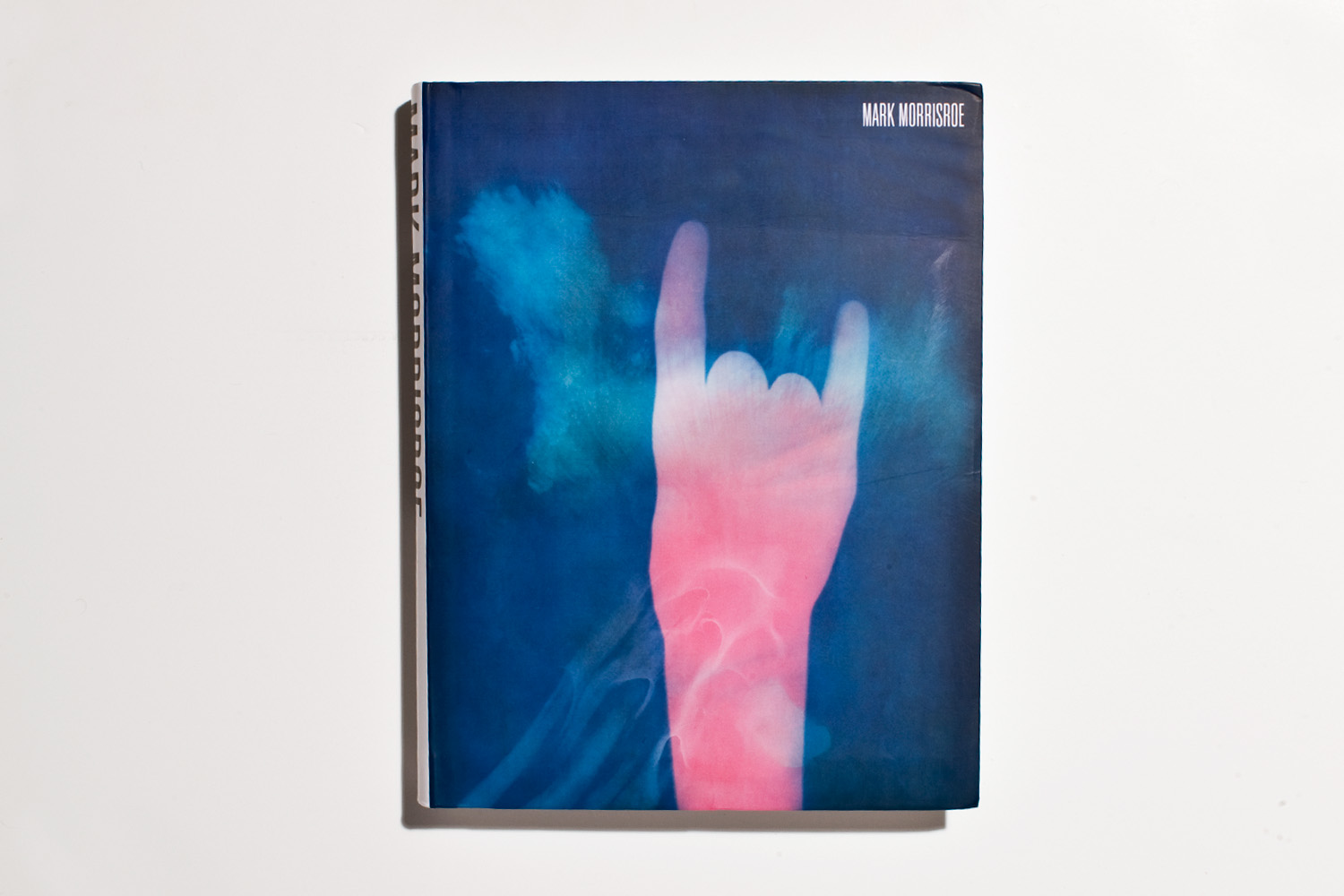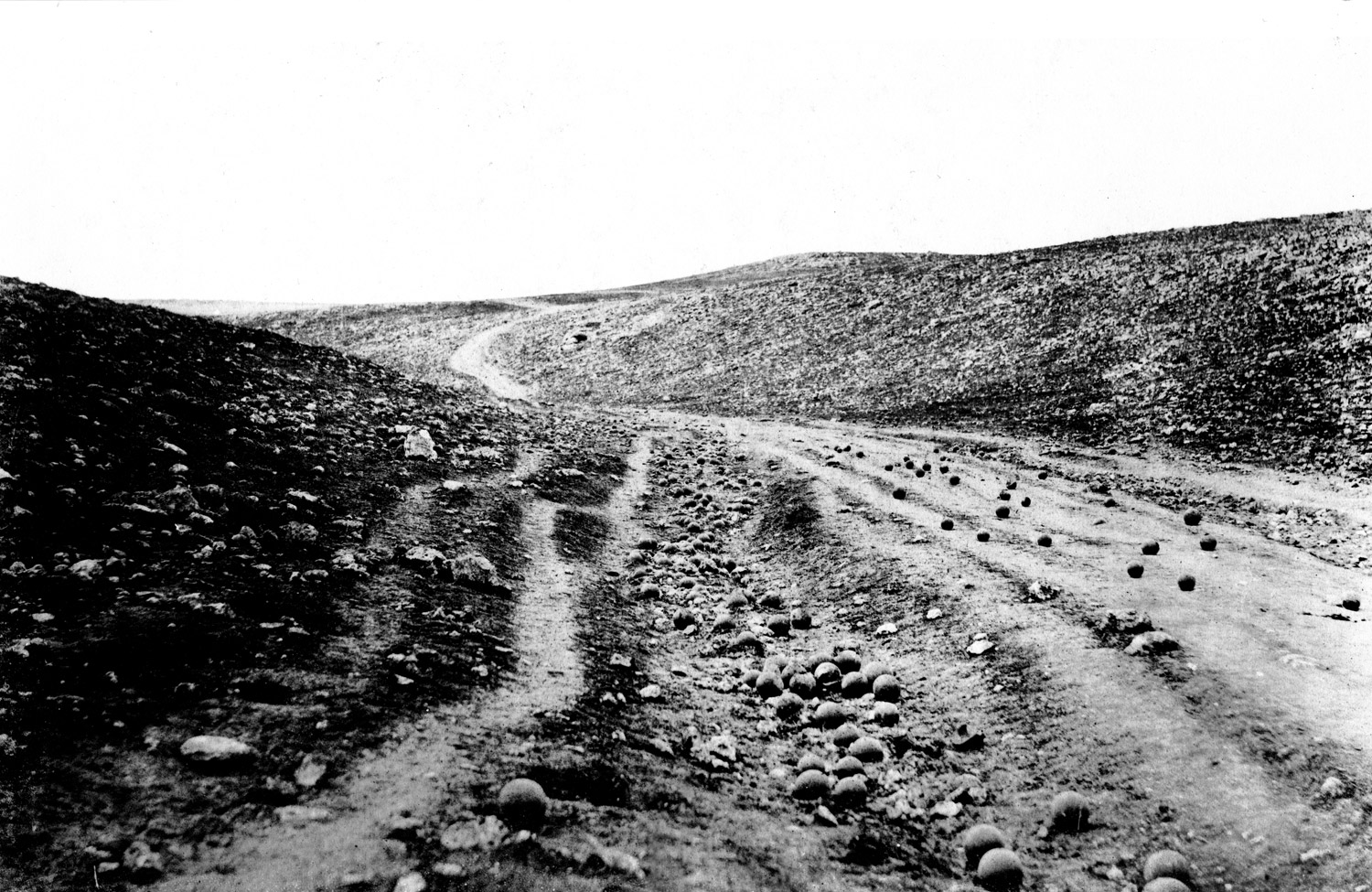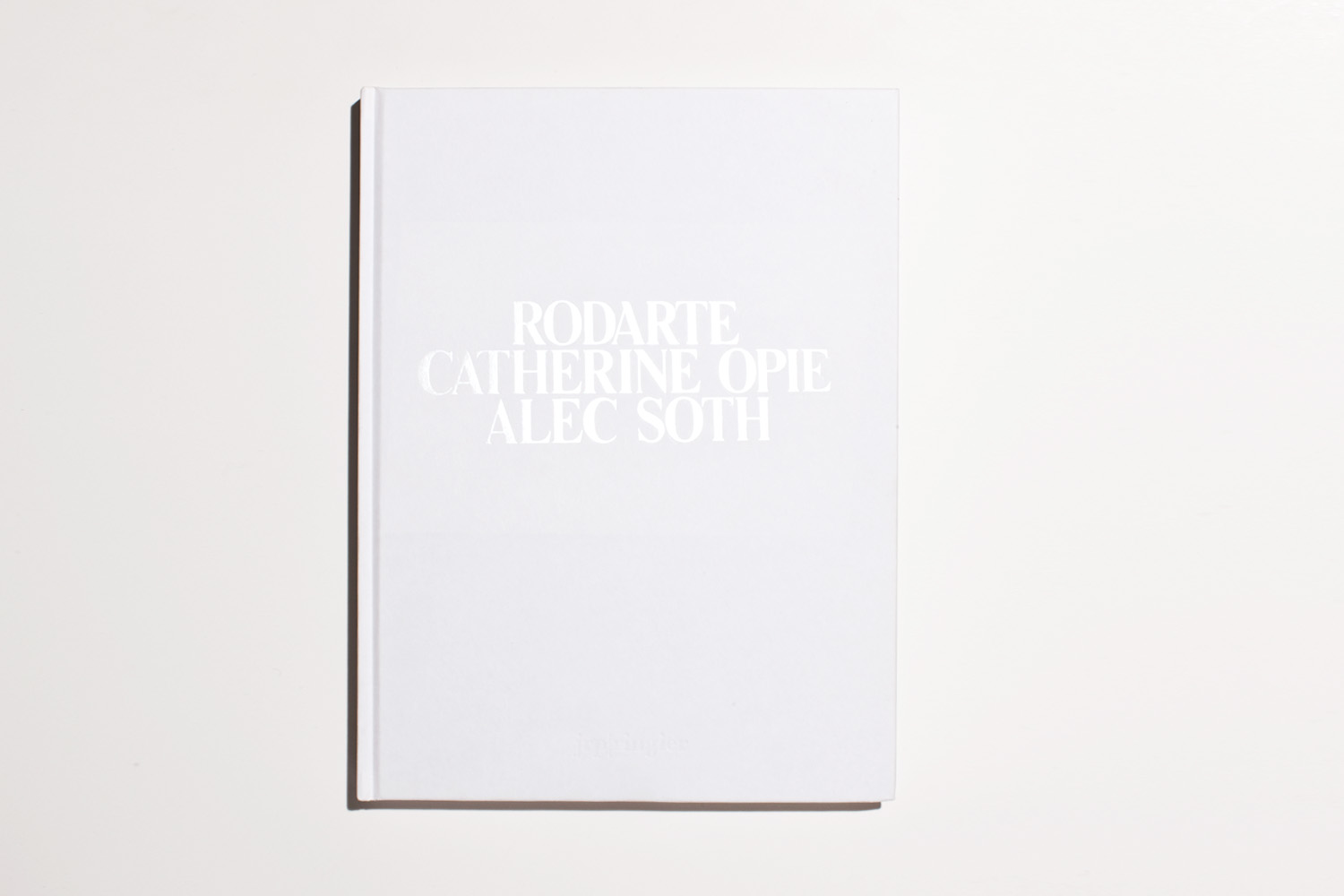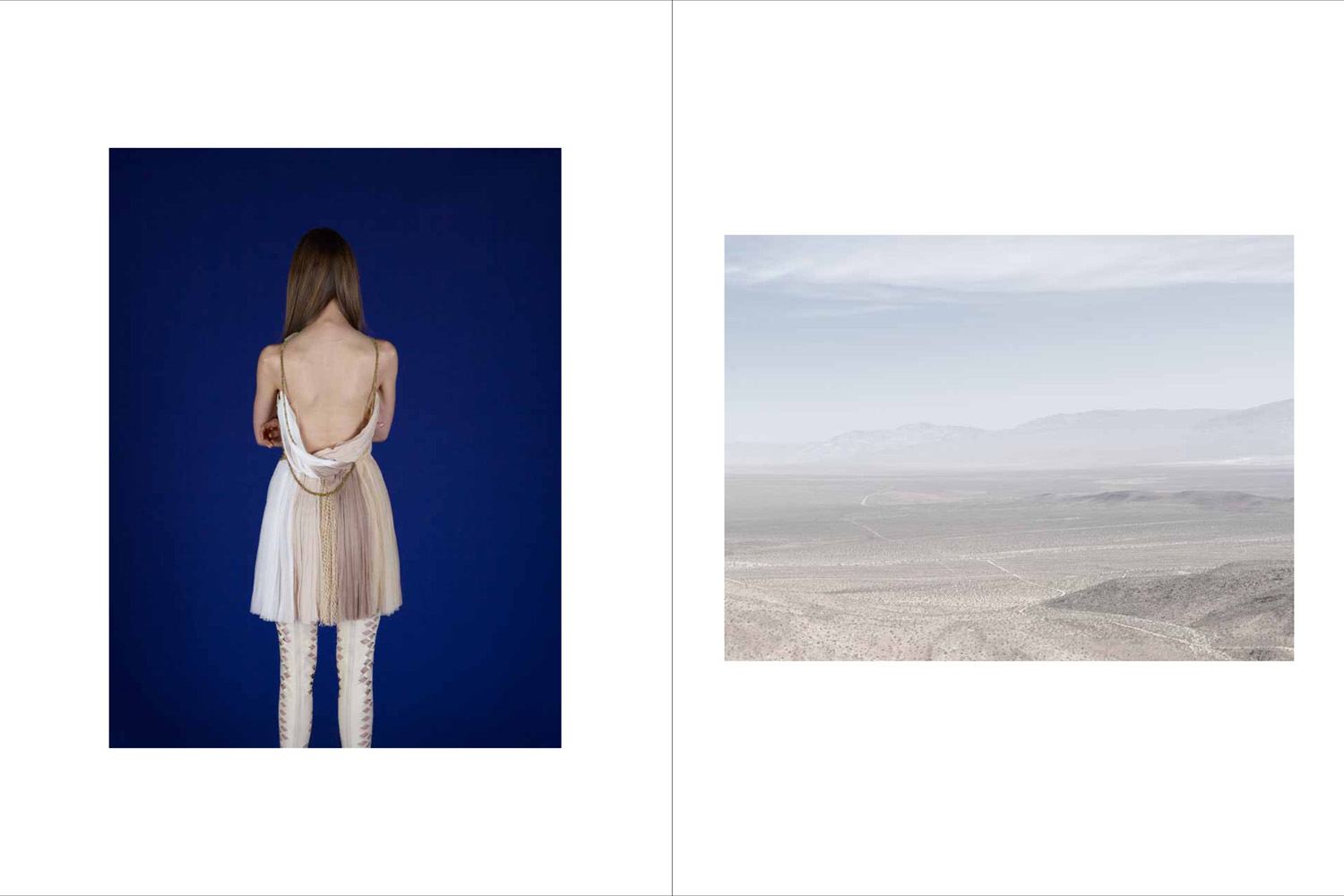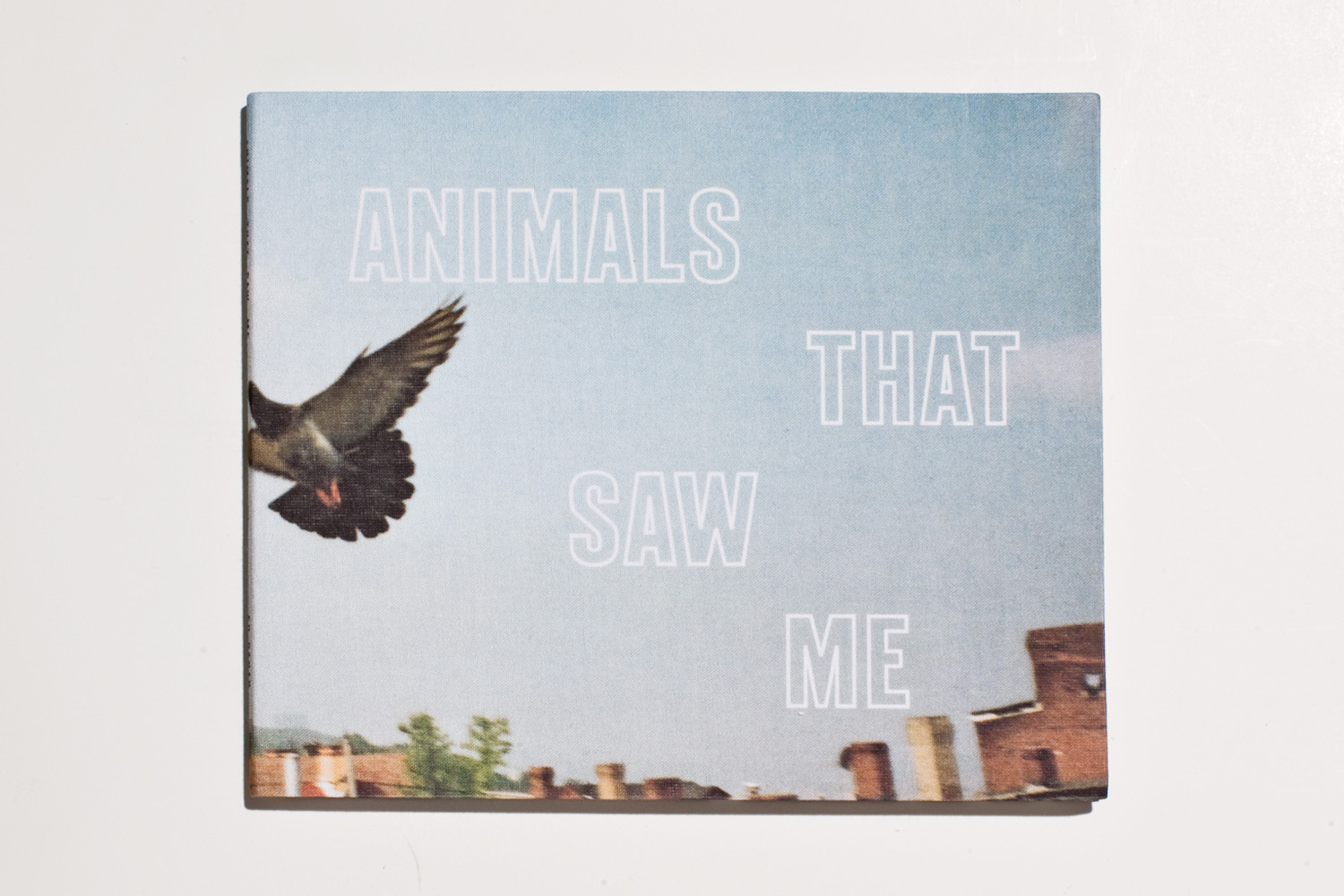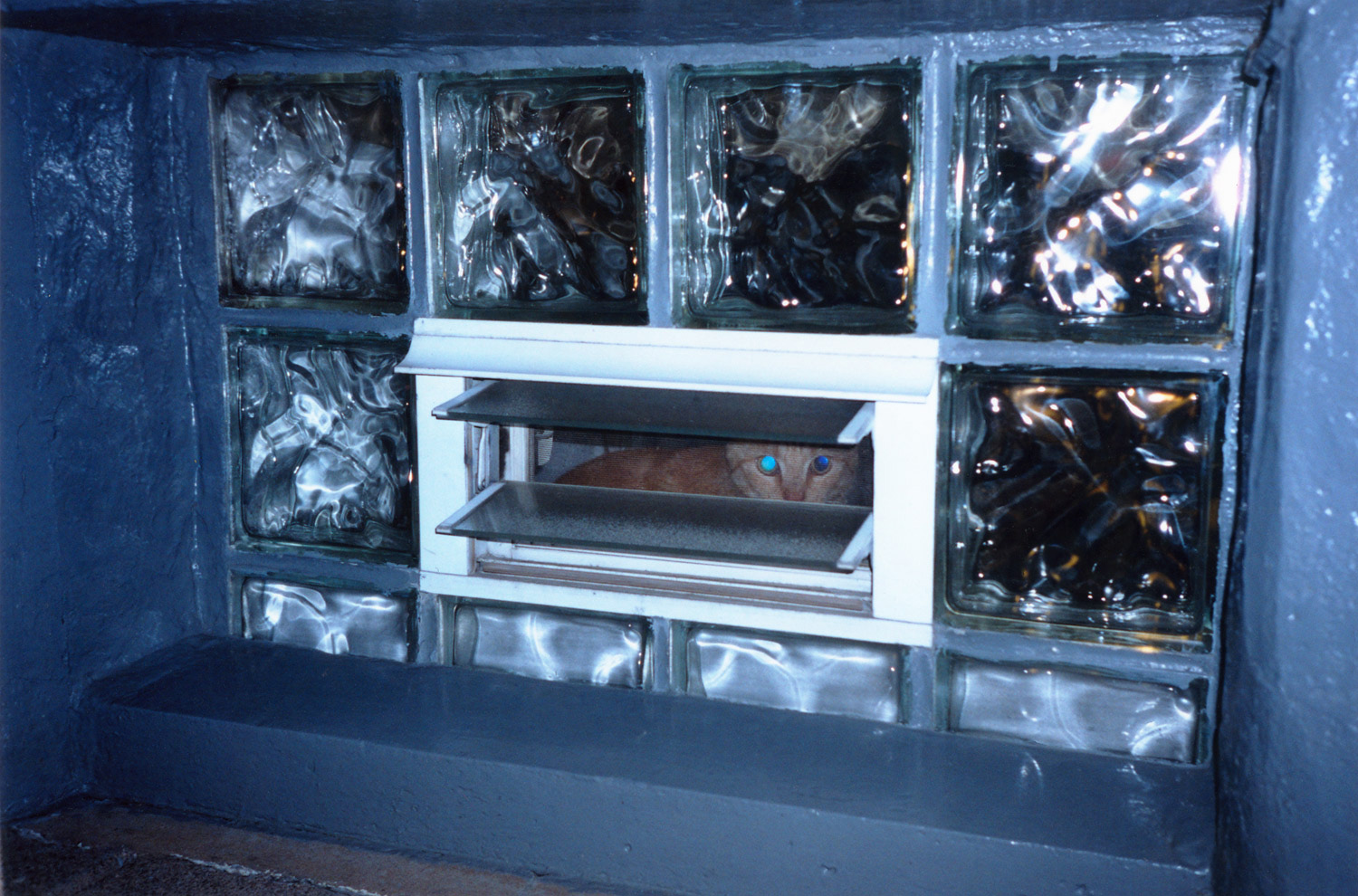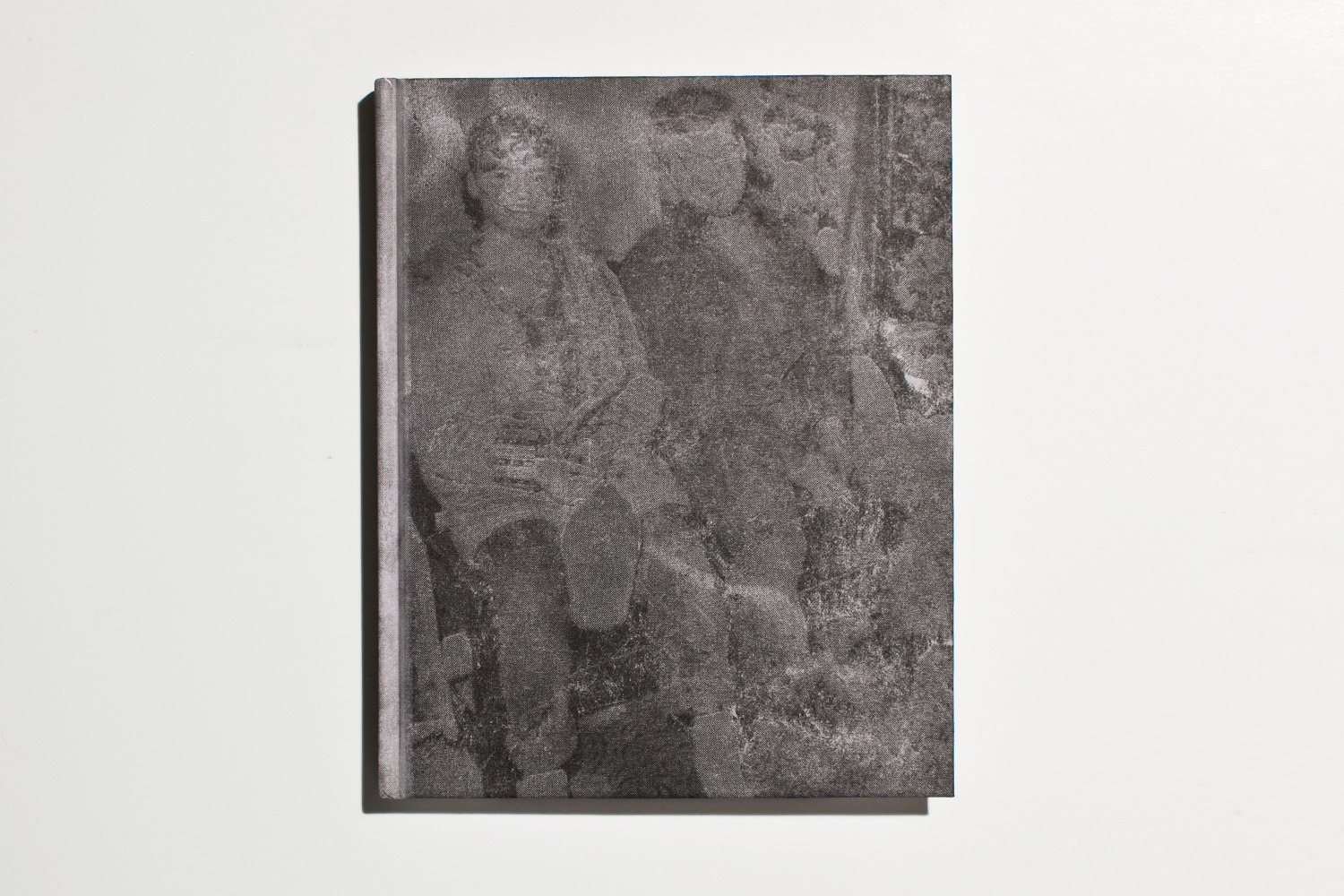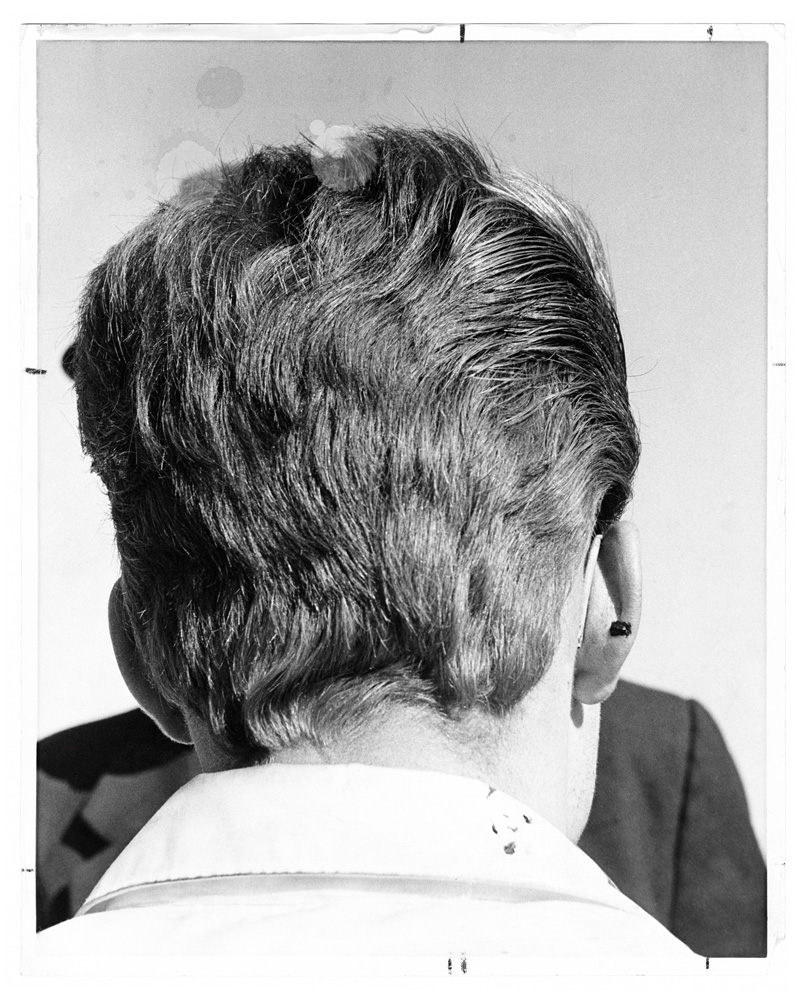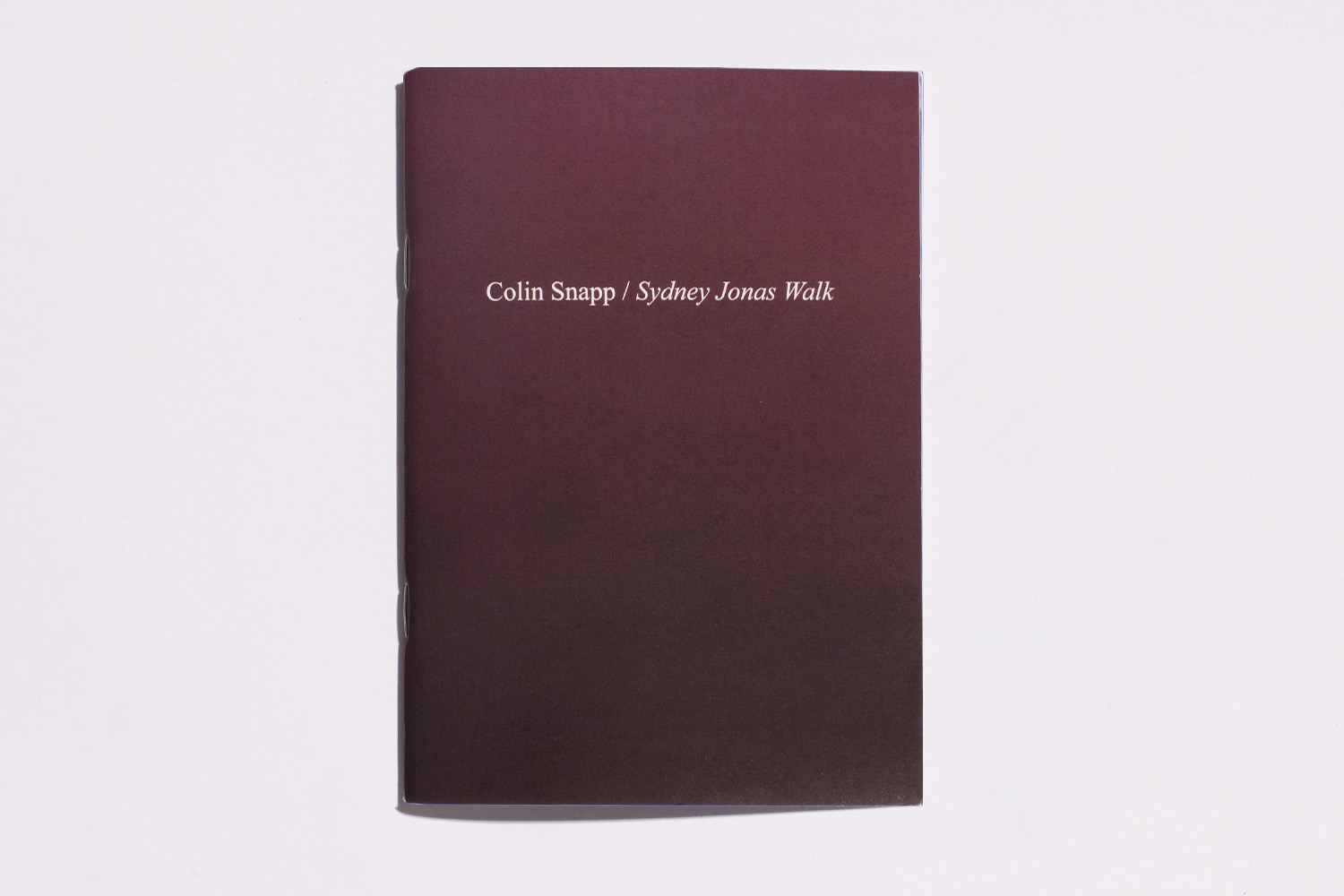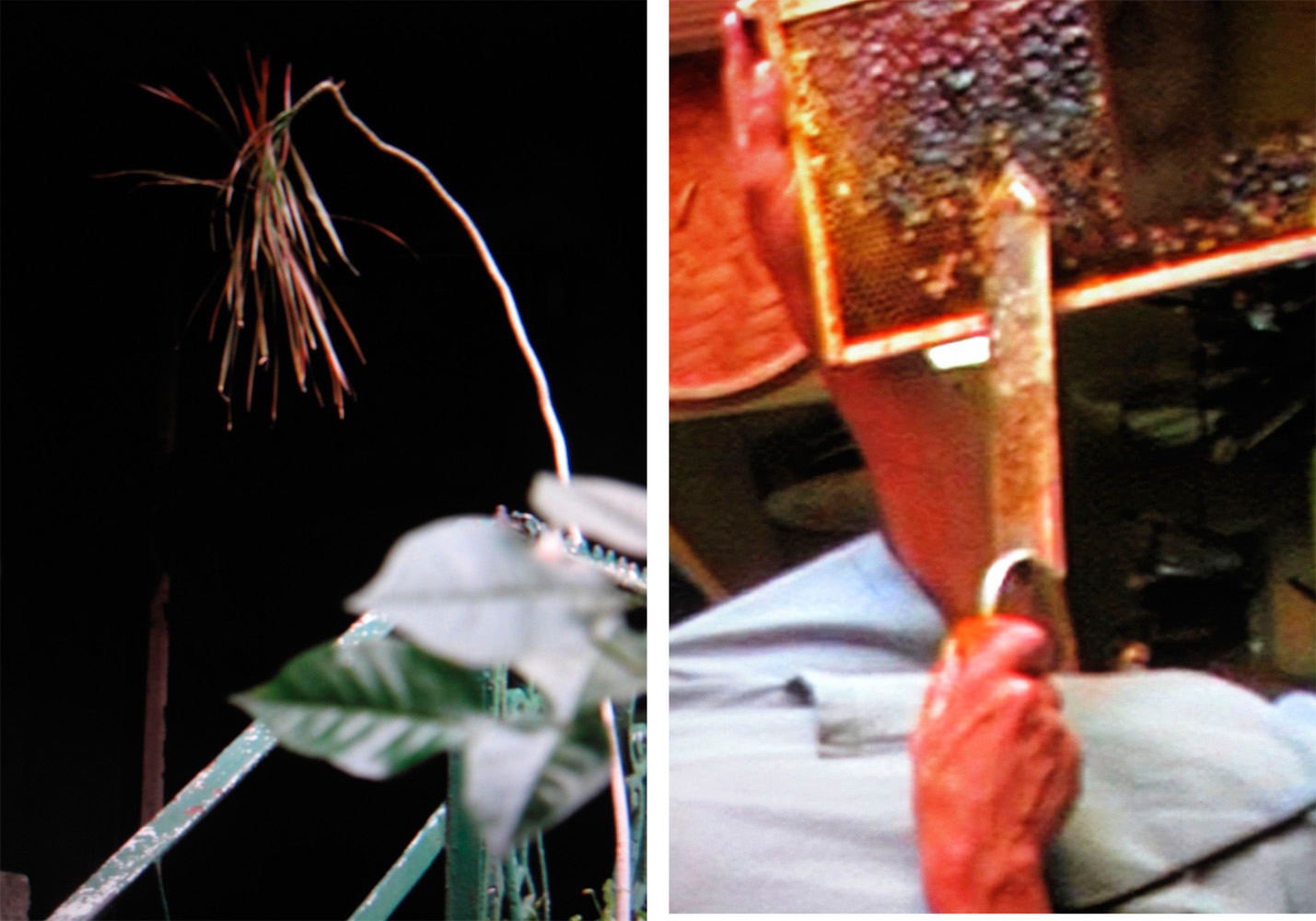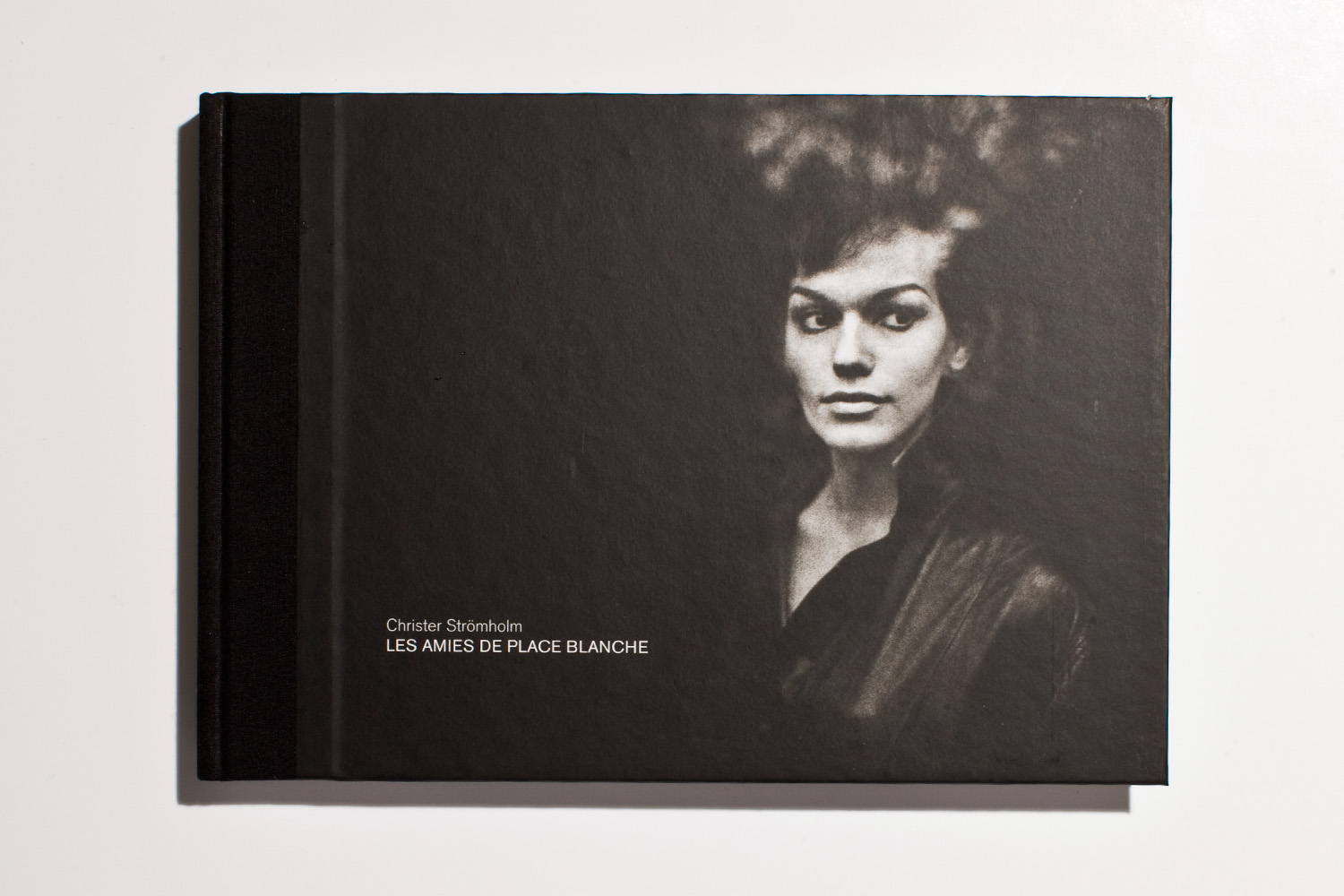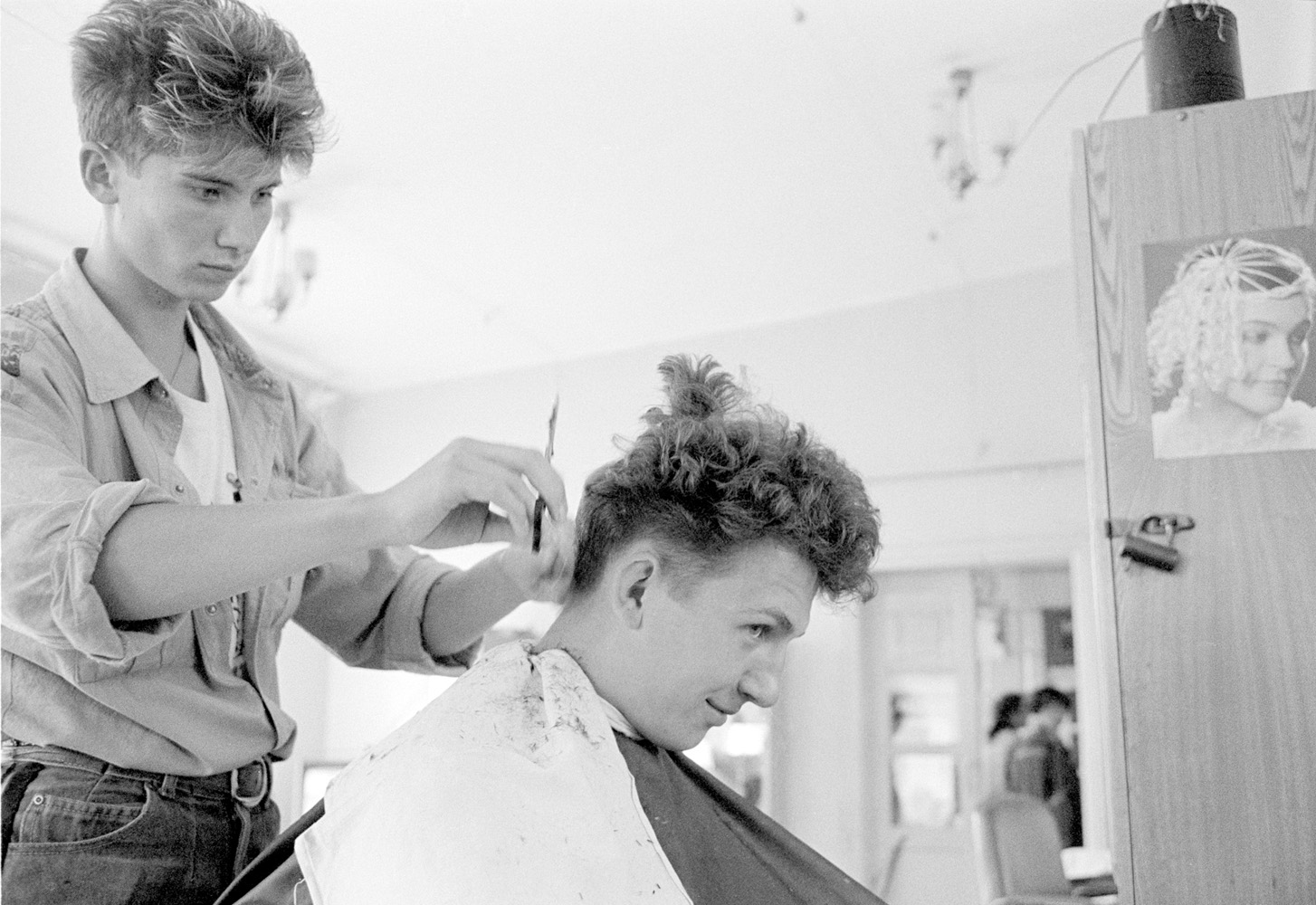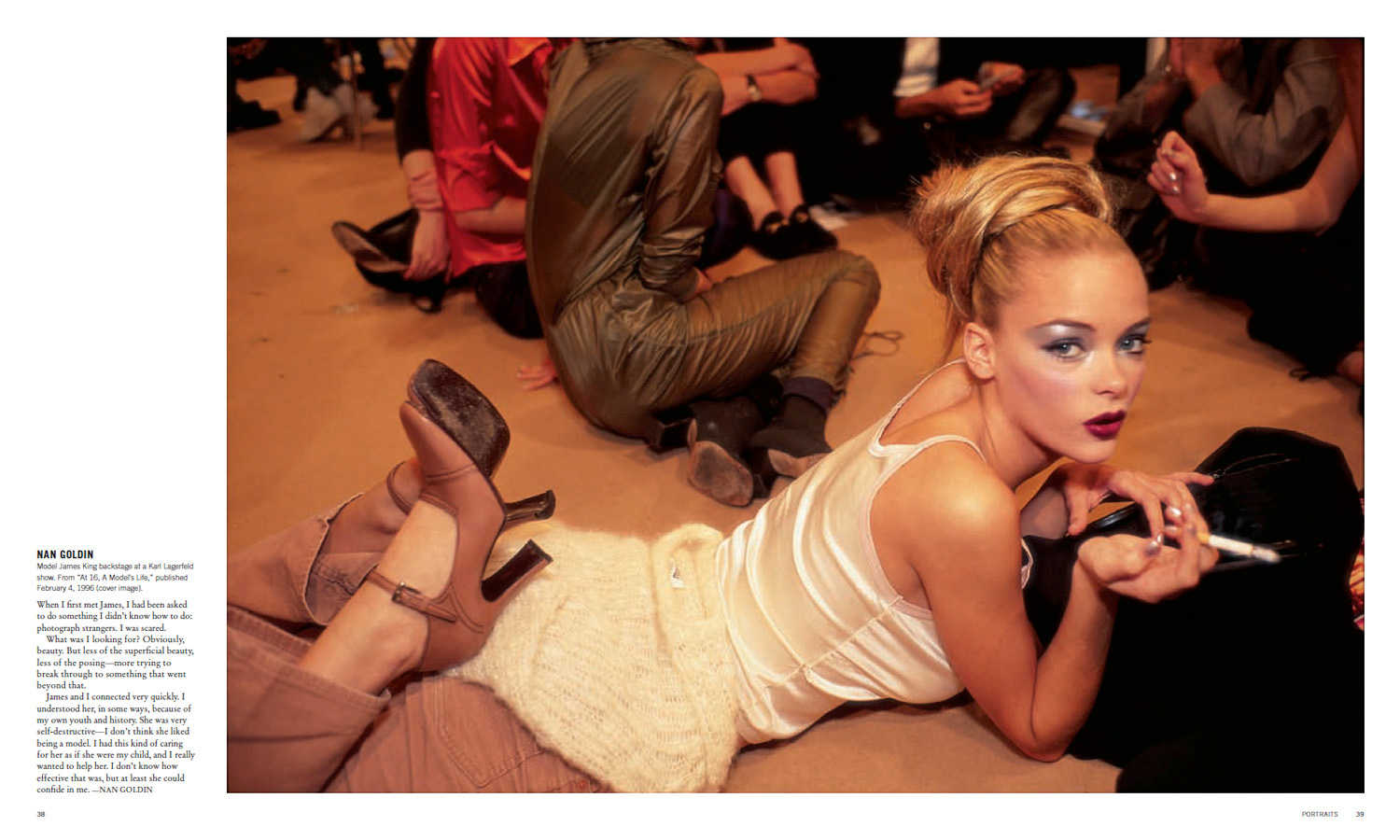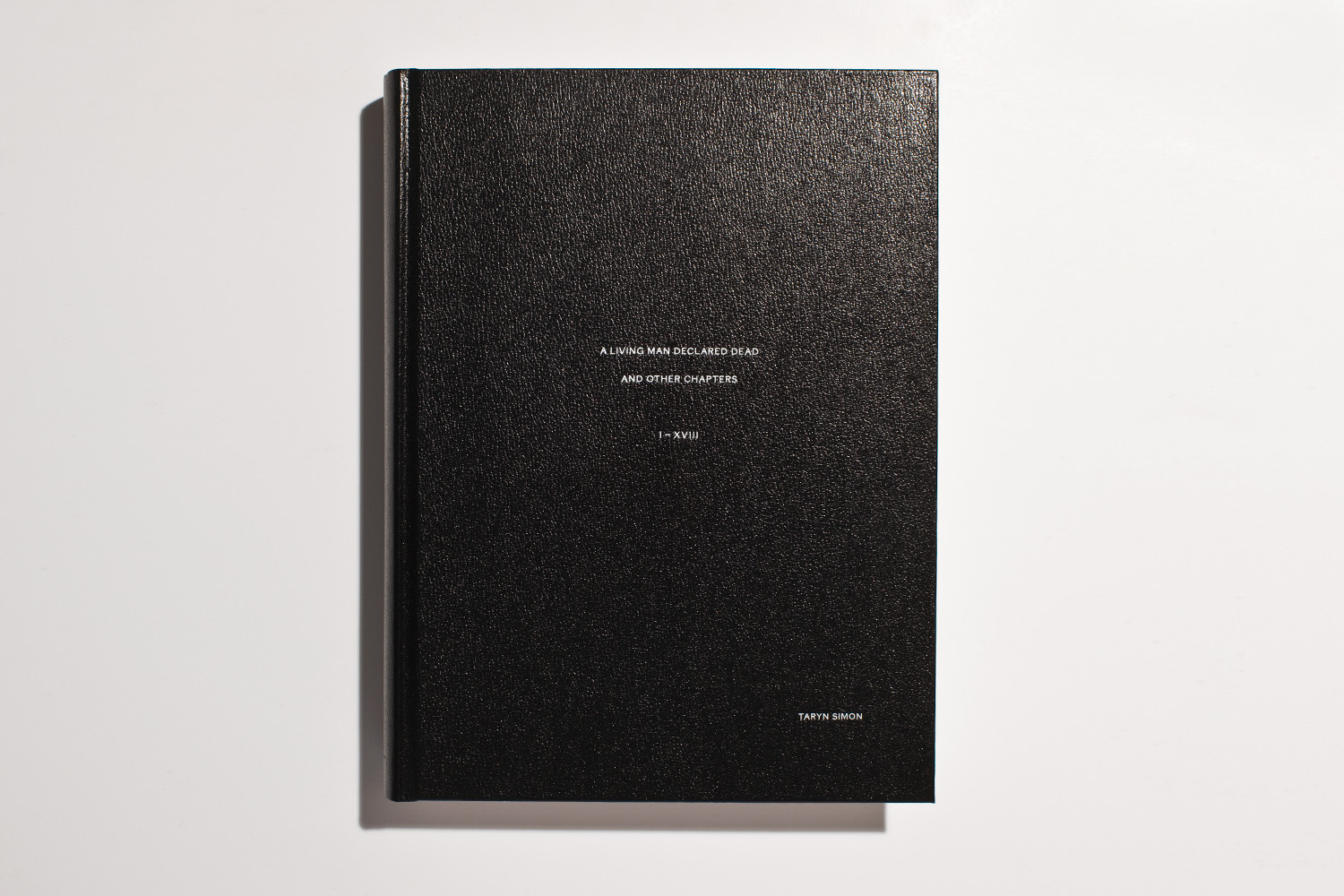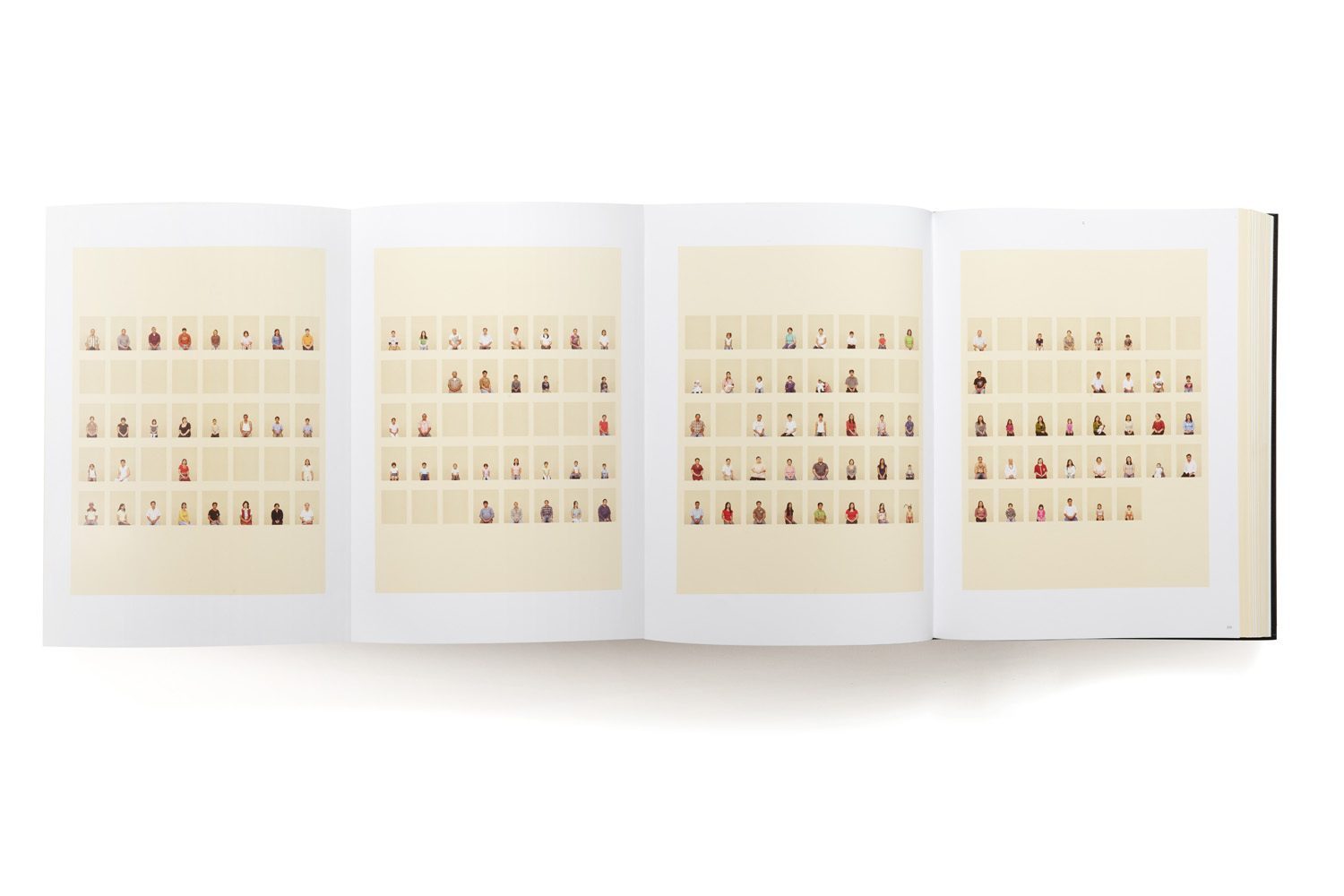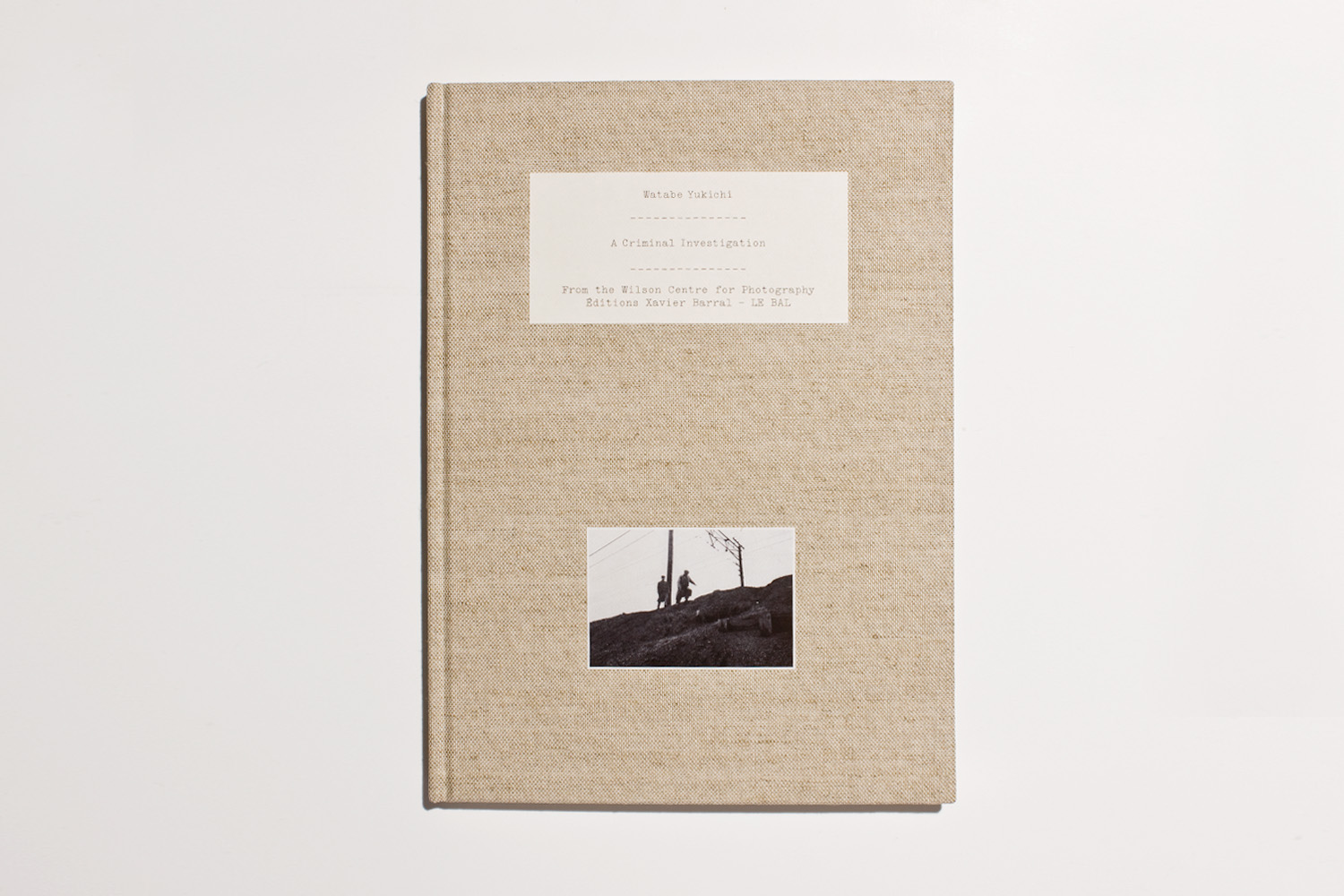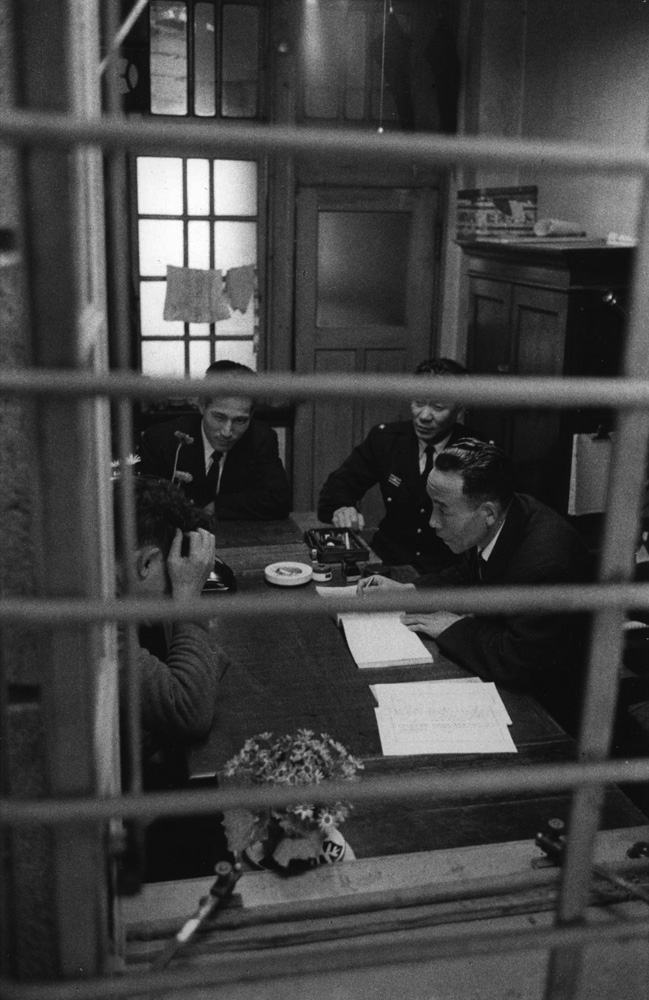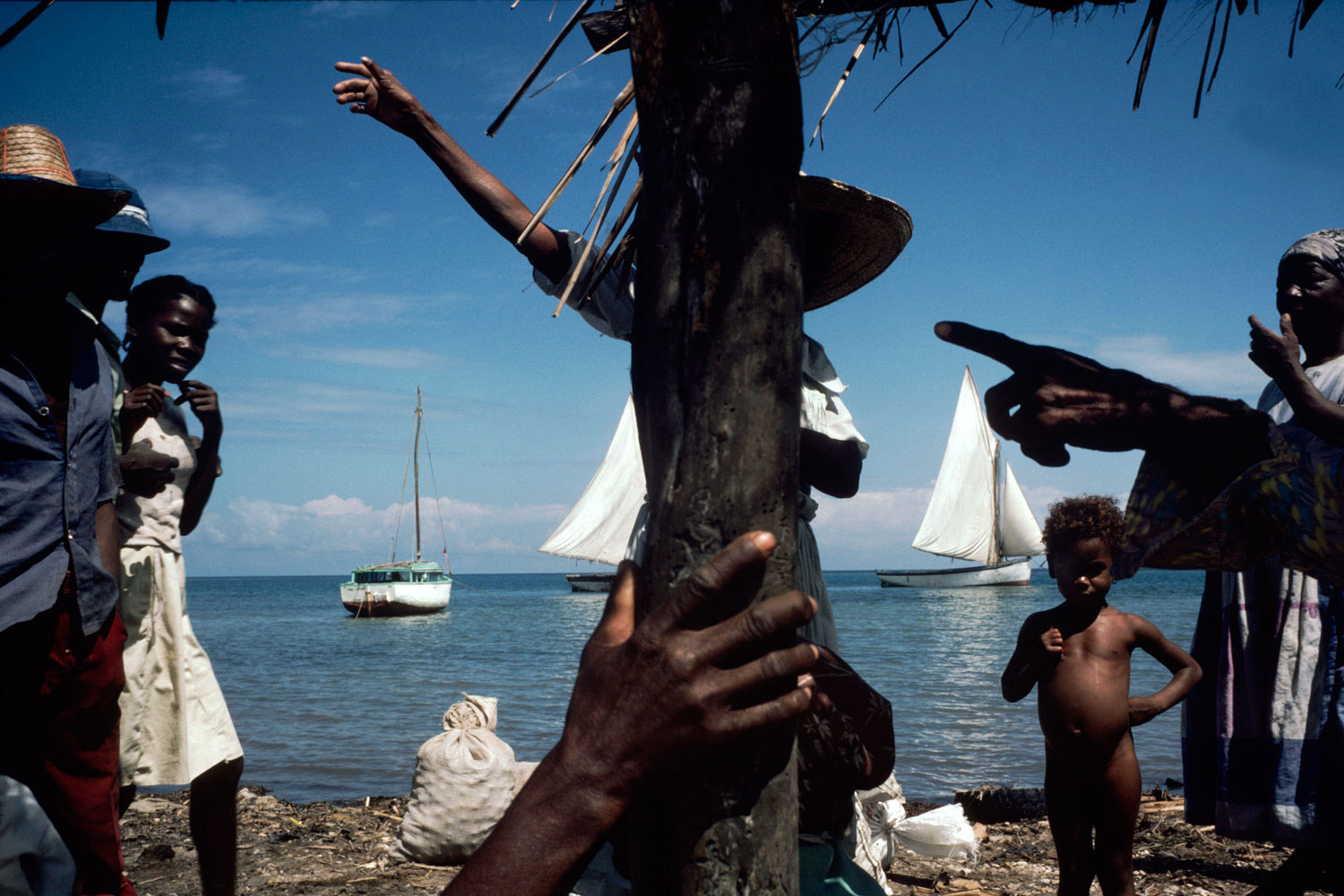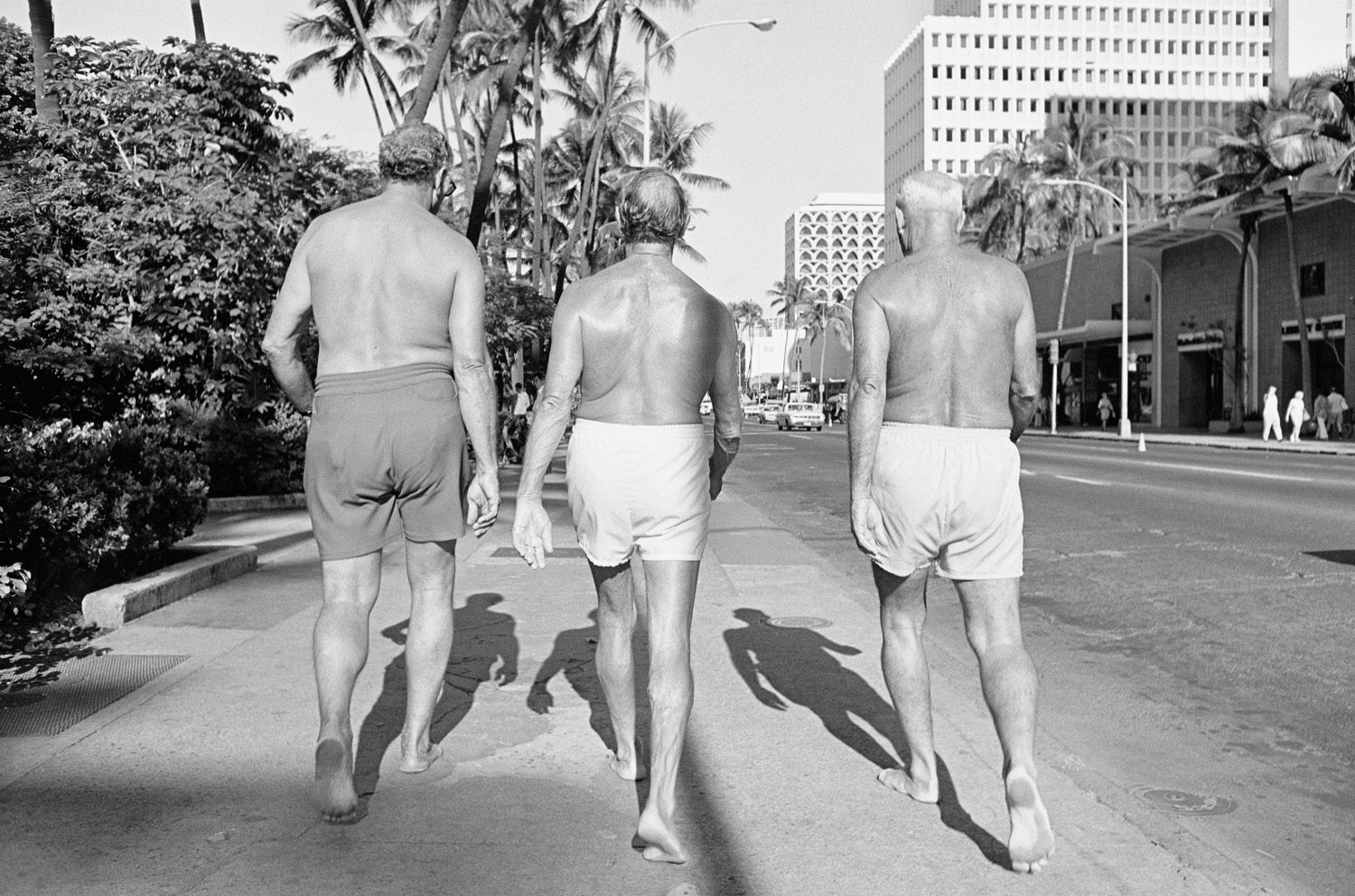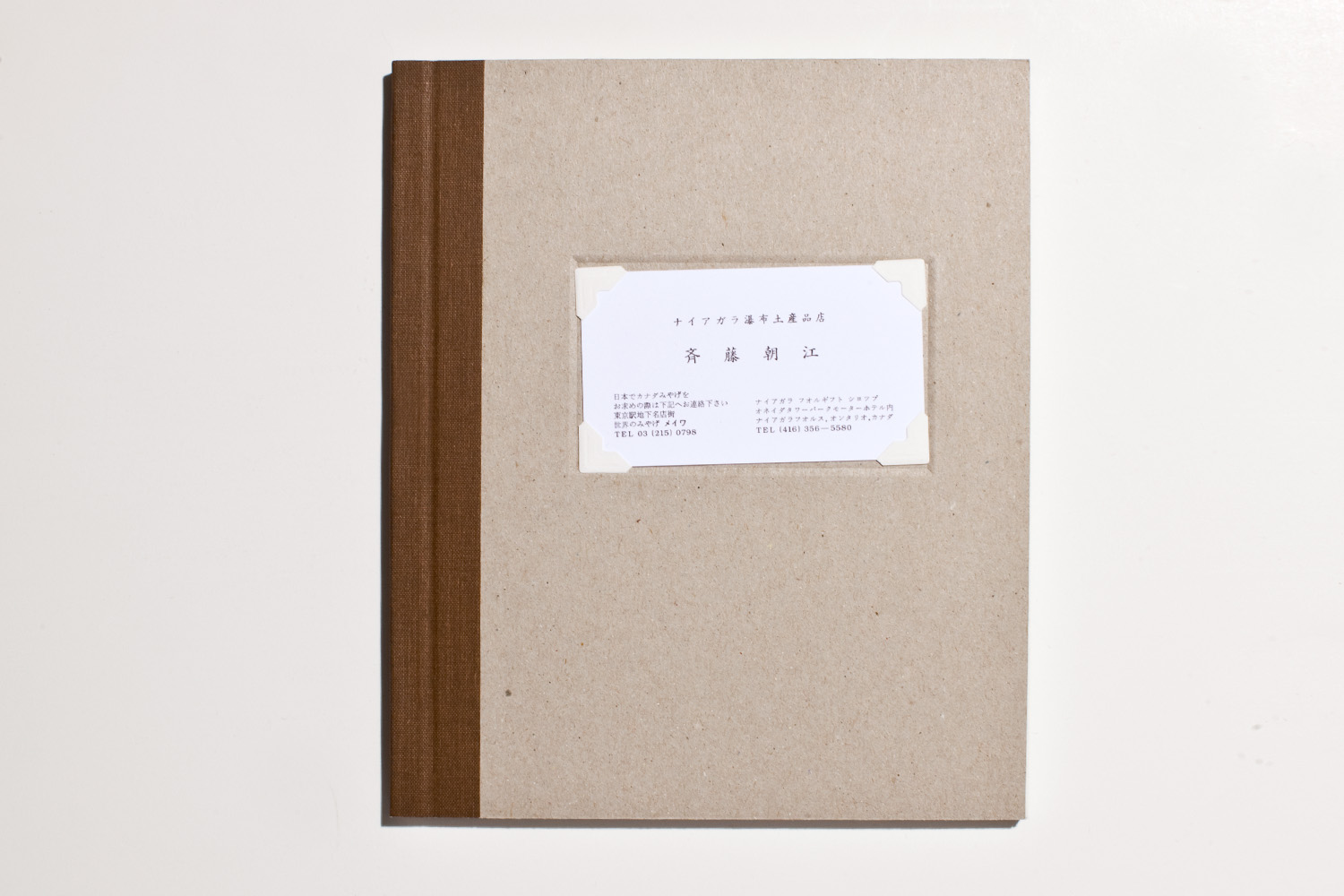December 29, 2011 4:00 AM EST
T his year we continued to see the rise of tablet computers and digital publishing, and we even wrote about a few digital books on Lightbox like Stephen Shames’ Bronx Boys . But elsewhere in photography, artists were working on photobooks for those viewers who may have wanted something a bit more lasting, a bit more tangible.
Here LightBox spotlights some of the best photobooks of the year as chosen by a group of photographers and photography experts from around the world…. and of course a few from the photo editors of TIME. From the selection one can see the art of the photobook continues to flourish in all genres from reportage to fine art photography, fashion and everything in between. This year’s books range from luxurious tomes like Catherine Opie and Alec Soth’s collaboration for Rodarte to smaller precious books like Fred Hunning’s Drei . Overall the selection shows that even as masses of information come at us from all our digital devices, people still enjoy a singular vision and the process of sitting down with a good book—especially one that pushes the boundaries of the format. Herewith, the photobooks we loved the most in 2011.
The Place We Live MACK Yale University Press "Given the recent rash of 'retrospective-in-multiple-books' I approached Yale's Robert Adams’ three volume set with some trepidation. Thankfully the combination of a generous edit and quite exquisite production makes this a book set to rival any show as a lasting testament to an extraordinary life's work."
—Michael Mack, publisher of MACK Robert Adams Salt and Truth Photo District News Candela Books "Outsiders have often portrayed Appalachia as a sort of rural ghetto, in want of our pity and intervention. But this remarkable collection of portraits by an insider, Shelby Lee Adams, defies the usual shame and condescension by digging deep into the culture and spirit of the place. Adams has an eye for the nuances of the lives and relationships of his people, and a solemn respect for their humanity. The result is a view of Appalachia as a richer, more life-affirming and self-sufficient place than most of us might think."
—David Walker, executive editor, Photo District News Courtesy Shelby Lee Adams / Candela Books West and South Hatje Cantz "In this well-edited, affecting monograph, Charles Brittin (1928-2011) looks at the West and the South at particularly beatific or volatile moments. The West is seen through the bohemian milieu of a group of artists and writers who Brittin fell in with while living in Venice Beach in the 1950s, while the South is captured from the urgent frontlines of the Civil Rights movement. In 1962, Brittin and his wife attended a meeting of the Congress for Racial Equality, a day that radically altered their lives. Brittin turned from documenting the freewheeling beatnik scene of art-making, parties, and Godard-esque hanging out, to violent protests and tense sit-ins, and began supplying photographs to the Los Angeles Free Press and the Black Panthers. Both eras of his work resulted in vivid, arresting images, but his turn toward social justice also makes him a hero of mine. As he put it simply, 'the times demanded that I do something.'"
—Lyra Kilson, writer and editor ©Hatje Cantz—Photographs by Charles Brittin Paloma al Aire Aperture's Book Program and The Photobook Review Dewi Lewis Publishing "A thoroughly idiosyncratic book - from its subject (Spanish pigeon racing) to its format and design (spiral bound, full bleed throughout). Spanish photographer Ricardo Cases presents a study of this niche sport, one that seems initially to have been fabricated for the sake of photographing, but turns out to be a hold out, an old-school sport in which pigeons are groomed, trained, and raced. The resulting photo book, quirky and beautifully printed, is a little gem worth seeking out."
— Leslie Martin, Publisher of Aperture's Book Program and The Photobook Review Courtesy Ricardo Cases / Dewi Lewis Publishing Val Verde International Center of Photography Karma Books "Sam Falls continues his inventive use of photography, his imaginative exploration of the book, and his keen sense of the possibility of it all. Out of whole cloth he builds work that is rooted in the real world, references many media including painting sculpture and yet is firmly grounded in the here and now. His pictures and books challenge the conventions of photography while embracing its traditions."
—Phillip S. Block, Deputy Director for Programs, Director of Education, International Center of Photography ©Karma Books—photograph by Sam Falls Fred Herzog Photographs TIME Douglas & McIntyre Publishers "Fred Herzog Photographs is like a film that is equal parts an astute document of working class life and a quietly spectacular omnibus story. Told with a good painter's sensitivity to color and form, the streetscapes, portraits, narratives and abstractions come to life in the photographer's book. Herzog's use of color photo's came at a time when black-and-white photography was still considered a more serious form of the medium, yet the 50-year-old color photographs seem more contemporary then much of the other photography during that time. Which is fitting, since Herzog was a true pioneer."—Natalie Matutschovsky, associate photo editor TIME
For more on Fred Herzog Photographs, check out our story here. Fred Herzog Rwanda 2004: Vestiges of Genocide The New Statesman Oodee "My favorite photography book of 2011 is a collaborative work by South African photographer Pieter Hugo and journalist Linda Melvern, issued in a small print run by the new independent English publisher Oodee. Rwanda 2004: Vestiges of Genocide consists of work made in Rwanda, a decade after the mass genocides of 1994. The images are accompanied by Melvern’s essay and a detailed map and chronology of all the major genocide sites in Rwanda. The premise and Hugo’s motivation for making this book can be summed up by one single chilling line at the beginning: “Evidence of genocide was everywhere.” The book is an attempt by Hugo to answer the questions he had about the heritage and legacy of genocide when a whole country becomes the theatre for mass murder. “Why had nobody cleaned it up, how does one regard landscape where this type of atrocity has occurred? How does a divided society that has gone through something as terrible as this manage to co-exist?” he asked. These politically charged forensic still lifes of human remains are followed by the now sublime landscapes of the former sites of massacre. The emotional and physical ephemera of war and death are still evident in everyday life in Rwanda. With this book Hugo continues his persistent questioning of politics, culture and history as an African and a photographer."
—Rebecca McClelland, Photography Editor of The New Statesman Courtesy Pieter Hugo—Yossi Milo Gallery, New York / Stevenson Gallery, Cape Town / Oodee drei Susan Bright, curator and writer Peperoni Books "DREI is the third in a trilogy of books (the first being Einer and the second Zwei) which he has been working on since 2005. It completes an incredibly tender story of the profound cycles of live in a small family. In Einer the loss of a baby is heartbreaking and the oblique shots of the mother and the dead animals that are though the book are a painful attempt to cope with grief and loss. Zwei concentrates just on Fred's partner, the mother, as she comes to terms with her grief and her position as a mother even though she has no child. It is a gathering back of self and a chronicle of their love for one another. Drei is a triumph in happiness, bonding, togetherness and love. It shows the mother with their son (the sonogram being the last hopeful page of Zwei). As a reader you are so happy they had another chance at having a baby and the sheer delight, joy and tenderness of the mother and child relationship is at times overwhelming. You can not imagine a more wanted or loved little boy, or indeed a more loved mother by both the men in her life. It also shows the power of photography to be a cathartic tool to deal with big emotional subjects and make sense of a world that can at times seem unfair, cruel and desperate Drei is pure beauty and happiness."
—Susan Bright, curator and writer Courtesy Fred Hüning / Peperoni Books Pontiac Fraenkel Gallery MACK "For those who first saw Amerika over 10 years ago, it is a true joy to watch Johannson's work gain greater recognition. In Pontiac , Johannson visits the Michigan city of the same name, and the photograph of the car on the cover alludes to the state as the home of America's car industry. His square, black-and-white photographs are studied and quiet, not quick nor flashy. They hint at the travails the city, state and car company have all faced in recent economic times. They also find beauty in the average, Midwestern landscape. This is just the most recent book in a steady stream of consistent, thoughtful books. My advice is to go find his others as well."
—Darius Himes, Assistant Director, Fraenkel Gallery Courtesy Gerry Johannson / MACK Sunday powerHouse Books Van Zoetendaal Gallery "Few in the history of the nude human form can claim a radical repositioning of the oft-too-clichéd art formula; outré artist (not by Dutch standards) Paul Kooiker manages to do just that: a modern photographic Botero incarnate, as delicate and precise as bronze, as luminous and ethereal as ceramic."
—Daniel Power of powerHouse Books Courtesy Paul Kookier / Van Zoetendaal Gallery, Amsterdam Iraq | Perspectives Indie Photobook Library Duke University Press "As a contractor for the U.S. State Department during the early phases of the Iraq war, I idealistically thought that language training would be a useful tool for diplomats and soldiers doing their job in Baghdad, but the reality of Green Zone living and the extreme security concerns limited conversation and interaction with locals. As daily media coverage in the U.S. showed the same kind of imagery, I searched for other perspectives and found them from Iraqi ex-pats who still had family there, Al-Jazeera, and the photographic work by Ben Lowy. Within the constraints of being an embedded photojournalist, Lowy creatively reveals glimpses of everyday life in Iraq in the context of war through the bulletproof windows of military Humvee and night-vision goggles—which in essence is the everyday perspective of our U.S. soldiers. As printed outlets for photo essays have disappeared it is all the more important for this kind of work to be published in book form."
—Larissa Leclair, Founder of the Indie Photobook Library Courtesy Benjamin Lowy / Duke University Press Magnum Contact Sheets TIME Thames and Hudson "Magnum Contact Sheets published by Thames and Hudson offers a unique insight into the working process of the celebrated agency’s photographers over the past seven decades—their approach to taking and editing their pictures, as well as their idiosyncratic relationships with the contact sheet.
The book details—and in some cases reconstructs—the back-stories behind some of the 20th century’s most iconic images. From those taken in the 1930′s by Henri Cartier-Bresson—who, the book reveals, purged all but the “Decisive Moments” from his archive —and Robert Capa’s celebrated images of the D-Day landings, to the civil rights era work of Bruce Davidson and Gilles Peress’ contact sheets that document the massacre of unarmed protesters on Bloody Sunday, to the more conceptual use of the contact sheet in the contemporary work of Chien-Chi Chang and Jim Goldberg."
—Phil Bicker, associate photo editor, TIME
For more on Magnum Contact Sheets , check out our story here. Chris Steele-Perkins—Magnum History’s Shadow Nazraeli Press "Basically, there are two ways to make photographs. One is to put all your photographic technique up front so that becomes your subject matter. The other is to put the technique behind the subject, in order to show it off and put all enhancements or clarifications at the service of that subject. The latter - what walker Evans called "documentary style" - is David Maisel's practice in History's Shadow. His subject is x-rays of sculpture made for conservation purposes, and his method is simply to put them on a light table and photograph them. The result is that these literal records made for scientific purposes take on an astounding symbolic life all their own. The book is also enhanced by having as a text, in place of the usual academic essay, an equally mysterious story by Jonathan Lethem titled 'Curator X.'"
—Colin Westerbeck, curator, writer, and teacher of the history of photography Courtesy David Maisel / Nazraeli Press Series American Suburb X
Kominek Books "Humans have a special place in their hearts for tragedy. News media coverage of violence and our urge to gawk, hand over mouth, at car wrecks and catastrophe support this notion. From the eye of the gawking-storm comes Mexican photographer Enrique Metinides. As a Weegee-like photographer of the macabre, Metinides' glorious eye has been turned on murder, mayhem and catastrophe for all of his life. The results are shocking yet touching - a voyeur glimpse into heartbreaking despair and utter helpless/hopeless-ness. Kominek Books, in their Metinides title "Series" (2011), bring a broader cinematic and serialized glimpse into key scenes that Metinides has left in his wake. A gem of a book, innovative, intimate and powerful."
—Doug Rickard, photographer, publisher and editor of American Suburb X
To see more on Metinides check out our story here. Courtesy Enrique Metinides / Kominek Books Mark Morrisroe The New Yorker JRP/Ringier "As usual, there are too many great books to choose from, but I'm going for Mark Morrisroe (JRP/Ringier), the book that accompanied his exhibition at Artists Space earlier this year. Morrisroe (1959-1989) is the most radical, experimental, and audacious of the loose-knit group of photographers, including Nan Goldin, Jack Pierson, and David Armstrong, who became known as the Boston School. Although he was a runaway at 13, a hustler two years later, and never exactly led a stable existence, his work was vivacious and frequently celebratory. He photographed himself, his friends and his lovers as if they were taking part in a spontaneous performance event or a never-ending party. He had a genuinely outlaw sensibility but an obsessive artist's eye (most evident in his Polaroids and photograms), and this book is the first to cover the full range of his often astonishing output."
—Vince Aletti, critic for The New Yorker Courtesy Mark Morrisroe / JRP/Ringier Believing is Seeing (Observations on the Mysteries of Photography) The Museum of Modern Art Penguin Press "I was excited to read Errol Morris' musings on photography compiled in the recently published Believing is Seeing (Observations on the Mysteries of Photography) . Morris' critical investigation of Roger Fenton's iconic Crimean War photographs proves the point that if you look at a picture long enough, you'll always find something new."
—Dan Leers, The Beaumont and Nancy Newhall Curatorial Fellow, Department of Photography, The Museum of Modern Art
For more on Believing is Seeing (Observations on the Mysteries of Photography) see our story here. Roger Fenton Rodarte TIME
JRP/Ringier "In an industry known for recycling trends and reinterpreting creations from the past, Kate and Laura Mulleavy—the sisters behind Rodarte—design clothing that belongs in an art museum instead of a fashion runway. Which is why it's so fitting that the great artists Alec Soth and Catherine Opie photographed their first book, Rodarte , published by JRP/Ringier in September. Opie's images of Rodarte clothing appear alongisde Soth's landscape images of California, both the sisters' home state and a constant source of inspiration in their work."
—Feifei Sun, associate editor, TIME JRP/Ringier—photographs from left: Catherine Opie, Alec Soth Animals that Saw Me TIME The Ice Plant "Ed Panar uses the language of vernacular photography to turn the idea of observing nature on its head. By capturing a fleeting moment of acknowledgment between species, there is tacit recognition that the roles of observer and observed are fluid and interchangeable. 'That’s what makes these photos interesting to me,' Panar says. 'We don’t really know what they’re thinking. We don’t know what we look like to them or what the world is like for them.'"
—Neil Harris, associate photo editor, TIME
For more on Animals that Saw Me , check out our story here. Ed Panar Redheaded Peckerwood Foam MACK "At first sight or better to say during a quick flip through the photo book, Christian Patterson’s images appear surreal but foremost their colorful beauty triggers the reader’s eye. But when starting to read from the very beginning you’re caught by the five pages long confession letter from 19-year-old Charles Starkweather and 14-year-old Caril Ann Fugate who murdered ten people, including Fugate’s family. Patterson recorded places and things that relate to this murder story and added discoveries along the way when following their killing spree across Nebraska to the murders’ point of capture in Wyoming. The artist deliberately mixes fact and fiction (by using techniques of reenactment, photojournalism or image appropriation), which feeds the viewer’s curiosity in solving this visual puzzle. Documents and objects that belonged to the protagonists and their victims are included along Patterson’s photographs. The way all the visual material is edited provides cues and clues, but at the end, the myth of this tragic story is being kept. Subtle and powerful at once, Redheaded Peckerwood is one of those rare photo books that you want to read again and again."
—Caroline von Courten, Managing Editor of Foam Courtesy Chrisitan Patterson / MACK Sydney Jonas Walk TIME Hassla "Colin Snapp's book, Sydney Jonas Walk , is an ethereal and fragmented journey through the artist's recent trips to the Northwest and beyond. The images, originally shot on video, were projected on to a wall and re-photographed, thus becoming decontextualized. As a result, the abstractions that remain give little to a sense of time and space, but reveal beauty in the overlooked and mundane."
—Alana Celii, photo intern, TIME ©Hassla— photographs by Colin Snapp Amies De Place Blanche Schaden.com Dewi Lewis Publishing "Like a great work of literature a photo book is really fantastic when you are caught by its story. Les Ameis De Place Blanche by Swedish Master Photographer Christer Strömholm is such an amazing book: Flip through some pages...and you are in Paris in a few seconds, you hear the sound of the Boulevards, your eyes reflecting the city of light, your nose smells the Metro. Now, start to follow Jacky, Nana and their friends into their intense life between Pigalle and Place Blanche. This Masterpiece is now available again as an extended reprint of the 1984 original edition—a must have!"
—Markus Schaden, founder of Schaden.com Courtesy Christer Strömholm—Vu / Dewi Lewis Publishing The Amnesia Pavillions Jason Fulford , photographer and publisher of J&L Books A-Jump Books "Alongside Muellner's photographs, he tells a story about a recent trip to Russia, retracing his steps from 17 years earlier while trying to find an old friend who has disappeared. Text and image are represented in equal parts, and play off of each other with subtlety and emotion. The older Muellner reflects on the younger version of himself with both nostalgia and a critical eye."
—Jason Fulford , photographer and publisher of J&L Books Courtesy Nicholas Muellner / A-Jump Books The New York Times Magazine Photographs TIME Aperture "The New York Times Magazine Photographs book is a window into all aspects of Kathy Ryan’s vision. Almost every photograph has a backstory from the photographer, and often from other editors and Kathy herself, where she so thoughtfully articulates the story behind each picture. At the end of the book are all the tearsheets, so you can see the original context in which the pictures ran. A lot of editors on Kathy’s level have a vision that evolves to a certain point and then stays there. Kathy continues to evolve and constantly grows as an editor. In September of this year, The New York Times Magazine was awarded a News and Documentary Emmy for her incredible production with Sølve Sundsbø, 'Fourteen Actors Acting'— a first for the Magazine and a fitting tribute to her ever expanding repertoire."
—Kira Pollack, director of photography, TIME ©Aperture—photograph by Nan Goldin A Living Man Declared Dead MACK "The ultimate testament to Simon’s relentless process of investigation, A Living Man Declared Dead is the catalog accompanying her project, and subsequent exhibitions, of the same name. Produced between 2008 and 2011, Simon followed bloodlines and their related stories from around the world; in a Tate Modern interview with the artist, she stated that the project explores “the external forces of territory, power circumstance or religion [colliding] with the internal forces of psychological and physical inheritance... [a] collection at once cohesive and arbitrary, mapping the relationships among chance, blood, and other components of fate”. The formal construction of the book—a black leather cover containing over 700 pages of beige and white paper stock of printed images and text—is reflective of the devout seriousness of the project, and of Simon’s undeniable taste for detail."
—Alexander Ho, verticals photo editor, TIME.com ©MACK—photographs by Taryn Simon A Criminal Investigation Little Brown Mushroom Xavier Barral / Le Bal "Following a detective investigating a 1958 murder in Tokyo, Yukichi's photos almost look like stills from a Chandleresqe noir. Elegantly mixing text and image with perfect printing and design, this is a masterpiece of photographic storytelling."
—Alec Soth, photographer and publisher of Little Brown Mushroom Courtesy Watabe Yukichi / Xavier Barral / Le Bal The Suffering of Light The New Yorker Aperture "I have been in love with Alex Webb's pictures for years, decades actually. Now there is a beautifully produced and printed book which includes both: pictures that are like old friends and new surprises. It makes me happy."
—Elisabeth Biondi, former Visuals editor of The New Yorker Alex Webb—Magnum Waikiki TIME Steidl "In Waikiki , Henry Wessel gives us his own careful observations on a place where most people come to escape their lives and experience a little paradise. There are hardly any illusions—just clear eyed observations in precise black and white photographs. The simple, understated book design compliments the nature of the work thus allowing this short series of photos to linger in your head like a vacation from long ago where it was too hot, sometimes boring, beautiful, yet unforgettable."
—Paul Moakley, deputy photo editor, TIME Courtesy Henry Wessel / Steidl Conductors of the Moving World by Brad Zellar Conscientious Little Brown Mushroom "Every year, I dread having to pick that one photo book that is supposed to be my favorite—usually, there are way too many good books to make this decision easy. Having said that, this year Brad Zellar's Conductors of the Moving World would be my pick. A selection of photographs taken by Eizo Ota, a Japanese policeman visiting the U.S. in 1972 to study traffic patterns, with text snippets from Zen books, traffic manuals and other texts added by Zellar. Each book is unique: The photographs are tipped-in prints, with the prints in each book being just a subset of the original group. Publications using vernacular photography rarely venture beyond simple selections of material, often picked for the purpose of nostalgia or amusement—this one easily and magnificently does."—Jörg Colberg, founder and editor of Conscientious Courtesy Brad Zellar / Little Brown Mushroom More Must-Reads from TIME Why Trump’s Message Worked on Latino Men What Trump’s Win Could Mean for Housing The 100 Must-Read Books of 2024 Sleep Doctors Share the 1 Tip That’s Changed Their Lives Column: Let’s Bring Back Romance What It’s Like to Have Long COVID As a Kid FX’s Say Nothing Is the Must-Watch Political Thriller of 2024 Merle Bombardieri Is Helping People Make the Baby Decision 
